An Exploration of the Northwest Region of Saudi Arabia
Traveling in the Kingdom of Saudi Arabia for nearly three months was a rich and beguiling experience.
Saudi Arabia is located in southwest Asia. It shares land borders with Iraq, Jordan, Kuwait, Oman, Qatar, the United Arab Emirates, and Yemen; and maritime borders with Bahrain, Egypt, Eritrea, Iran, and Sudan. Saudi Arabia’s land in 95% desert. Rub’ al Khali (also known as the Empty Quarter), the world’s largest continuous sand desert, occupies its south. The Kingdom’s population is over 35 million.
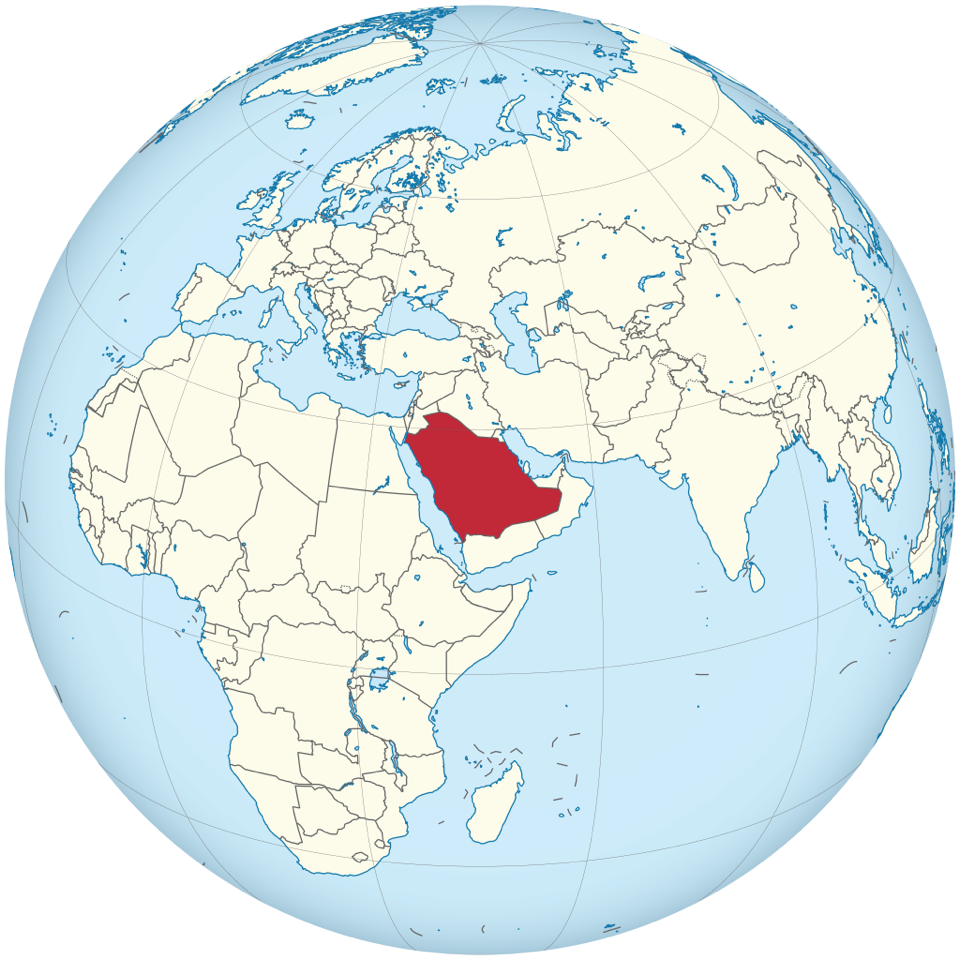
Saudi Arabia has mountains, beaches, coral reefs, grasslands, and forests. Its human history stretches back more than 7,000 years.
Saudi Arabia is the 13th largest nation in terms of land area. The United States is about five times bigger than the Kingdom. Saudi Arabia is four times the size of France, Western Europe’s largest country.
Several times in the last decade, I travelled to the then-closed Kingdom of Saudi Arabia as the Executive Vice President at the Huntsman Cancer Foundation.
In 2019, the Kingdom opened its doors and actively started encouraging tourism as part of its Vision 2030 strategic initiative. Increasing numbers of visitors are now discovering that Saudi Arabia is unexpectedly diverse. I couldn’t wait to return.
I departed New York City in the winter of 2022 for a stay in the Kingdom.
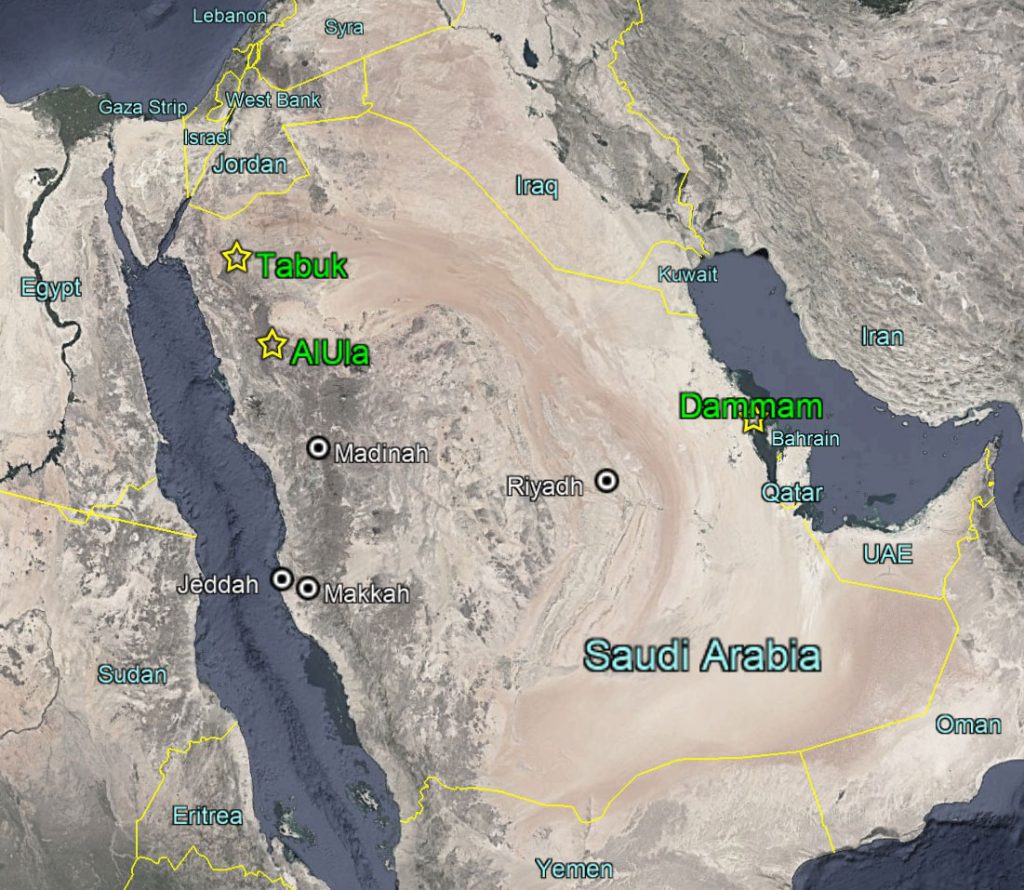
On a geological timescale, the Arabian Peninsula is young. It separated from the main African continent approximately 25 million years ago, creating the Red Sea. It is no surprise that Saudi Arabia’s desert has much in common with the Sahara. Indeed, the sands have the same orange coloration due to the presence of iron oxides.
A ten hour flight from New York’s JFK Airport landed me in Jeddah. A quick change of planes and a two-hour flight later, I reached Dammam’s King Fahd International Airport. My first destination was Saudi Arabia’s Eastern Province. I wanted to visit with my friends for a few days before heading out on my adventure.
For a week, I watched the splendor of the sunrise over the Gulf on Al Aziziyah beach.
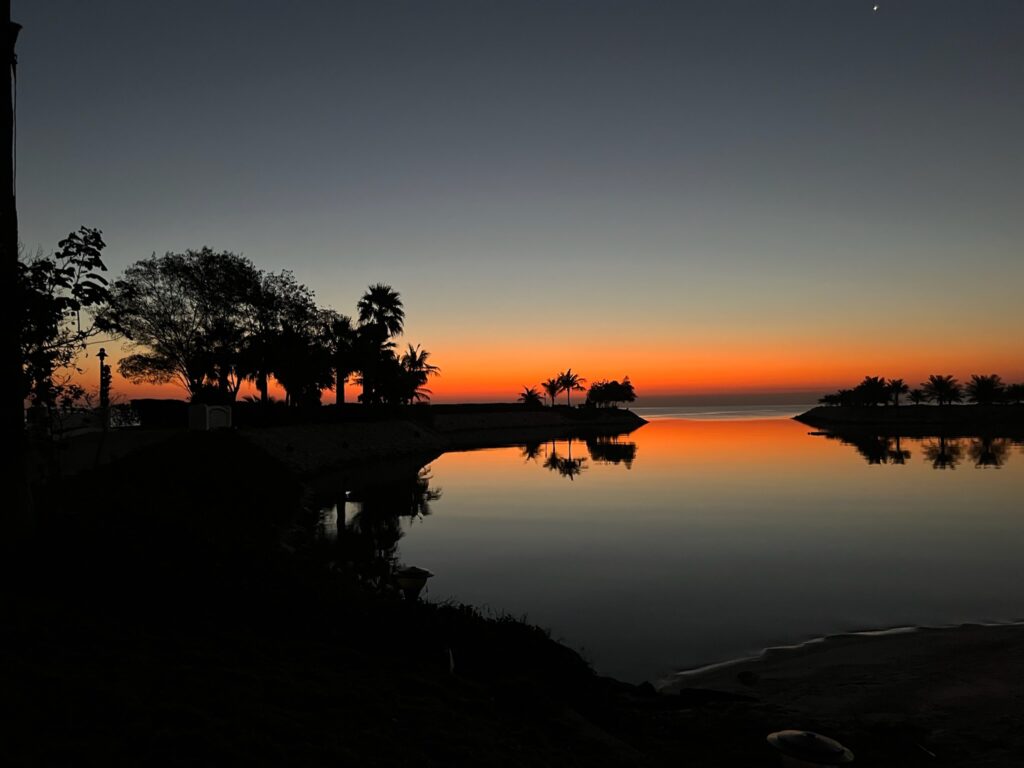

Along these coastal waters is a food truck extravaganza. Radio Bahrain offered the music of the night.

I wear the abaya and I love it. My favorite has a cape attached. There was no need to cover my head or even wear an abaya. As with all other women the choice was mine. For me, as for most others, I wanted to honor the culture. There is something else about putting on these robes: they felt comforting and assimilating. There are many technicolor abayas. They are very theatrical. I often wear them to black tie events in New York City and people want to know the designer’s name.
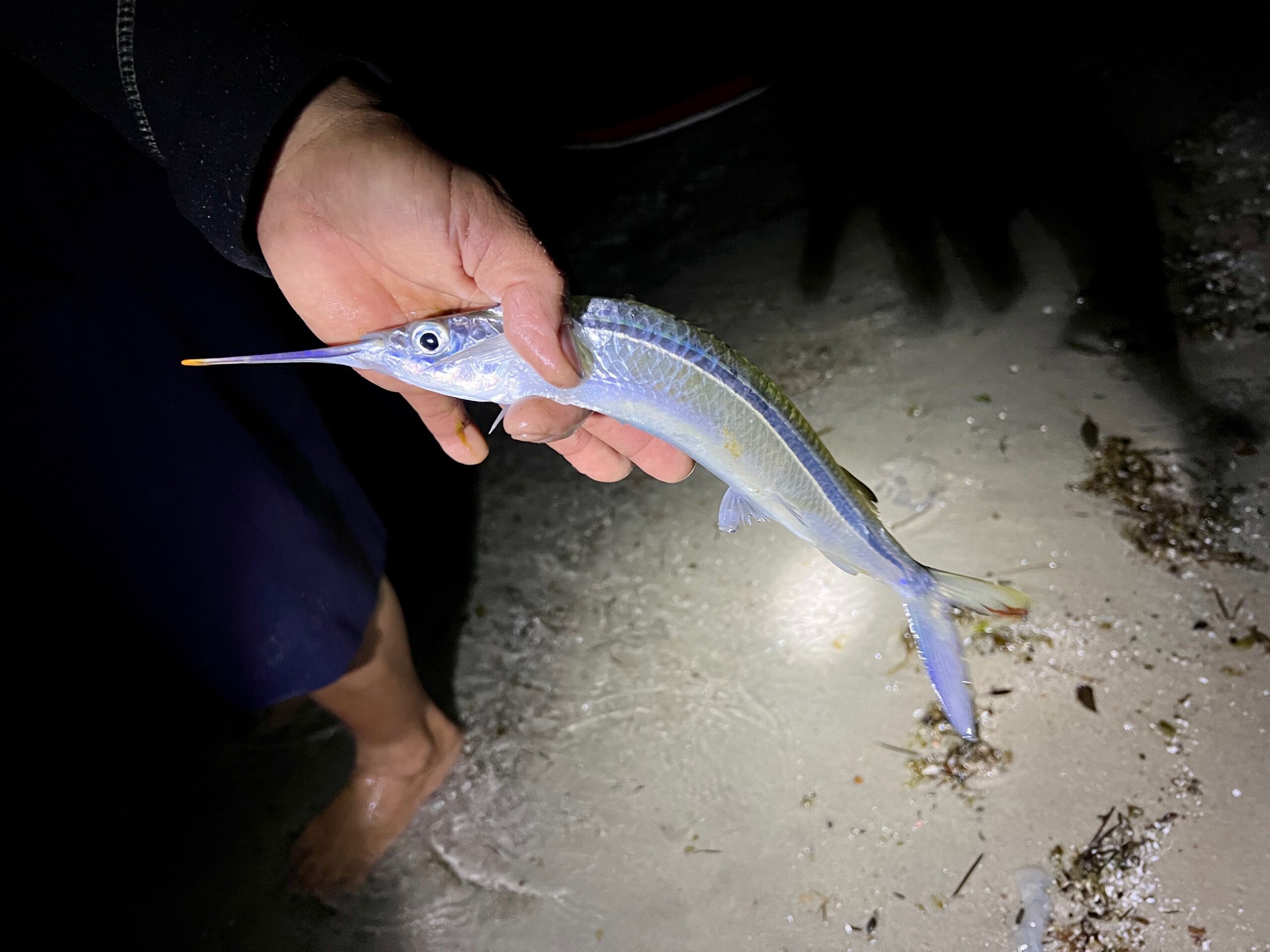
I explored the Kingdom of Saudi Arabia with the purpose of photographing and writing about my experience.
This is my story of traveling to Northwest Arabia: AlUla, Madain Saleh/Hegra, Tabuk, and NEOM with The Line.
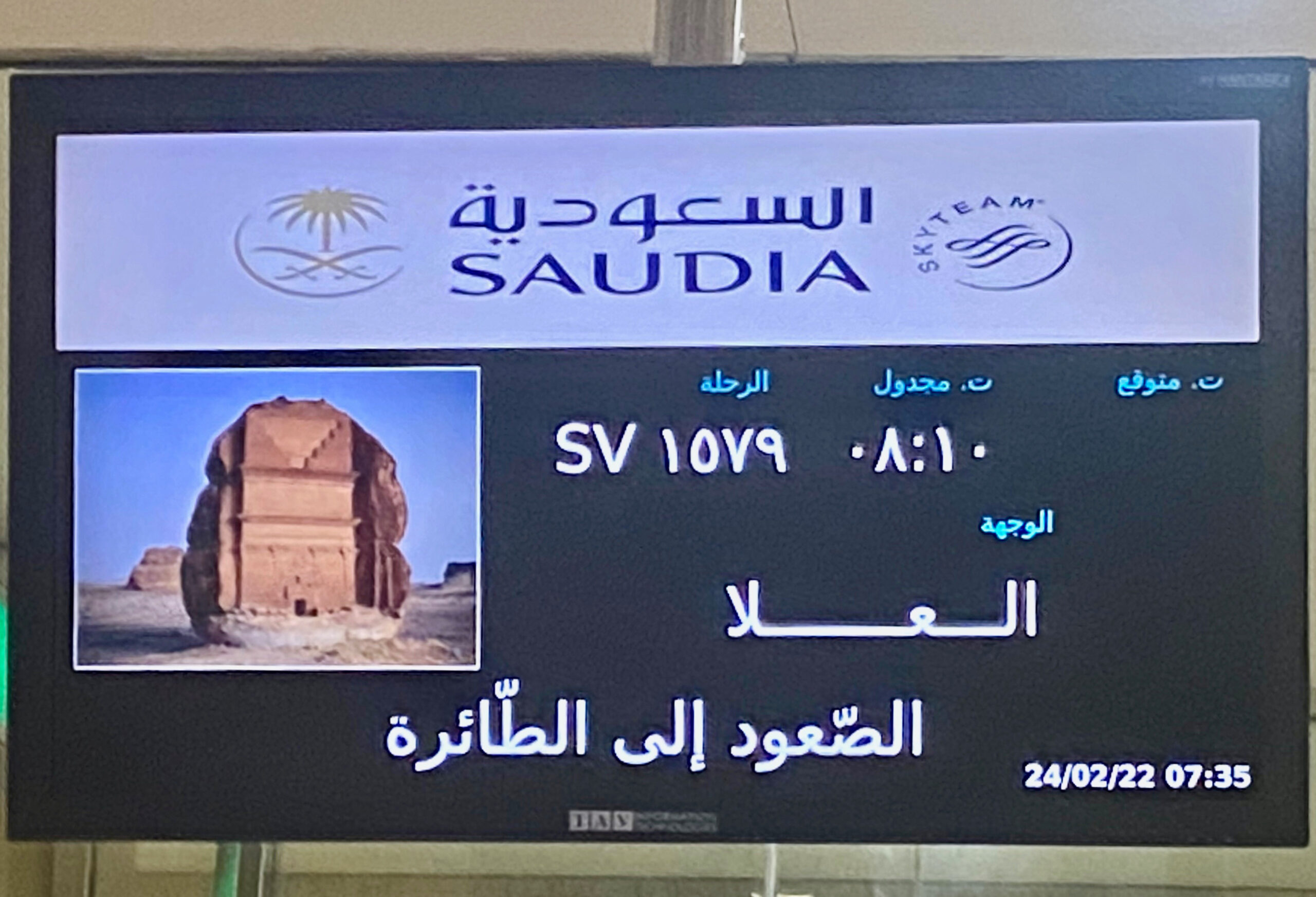
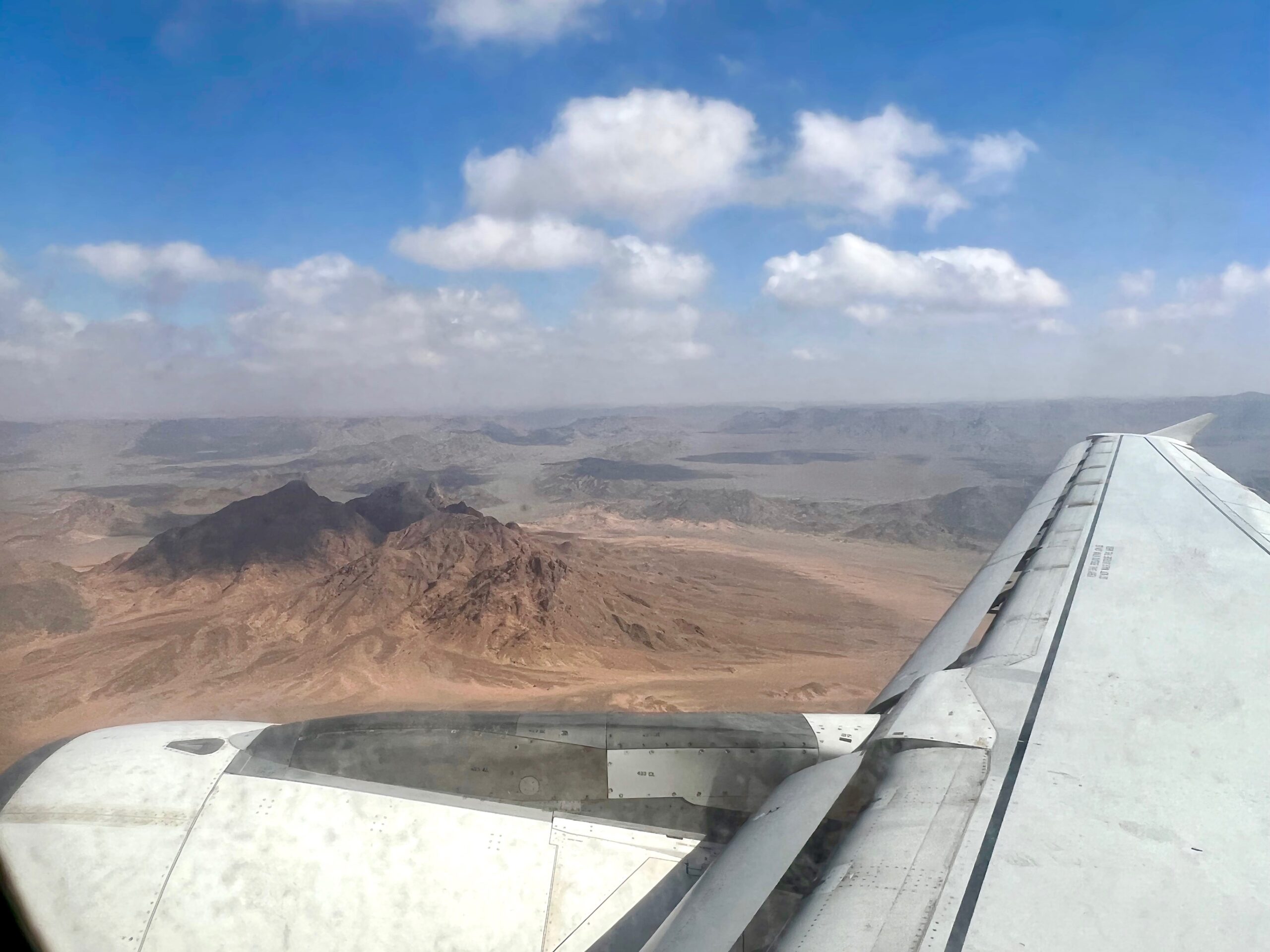
The flight from Dammam in the Eastern Province to AlUla in northwest Saudi Arabia is less than two hours. That region of the Kingdom lies adjacent to Jordan and shares the Red Sea with Egypt.
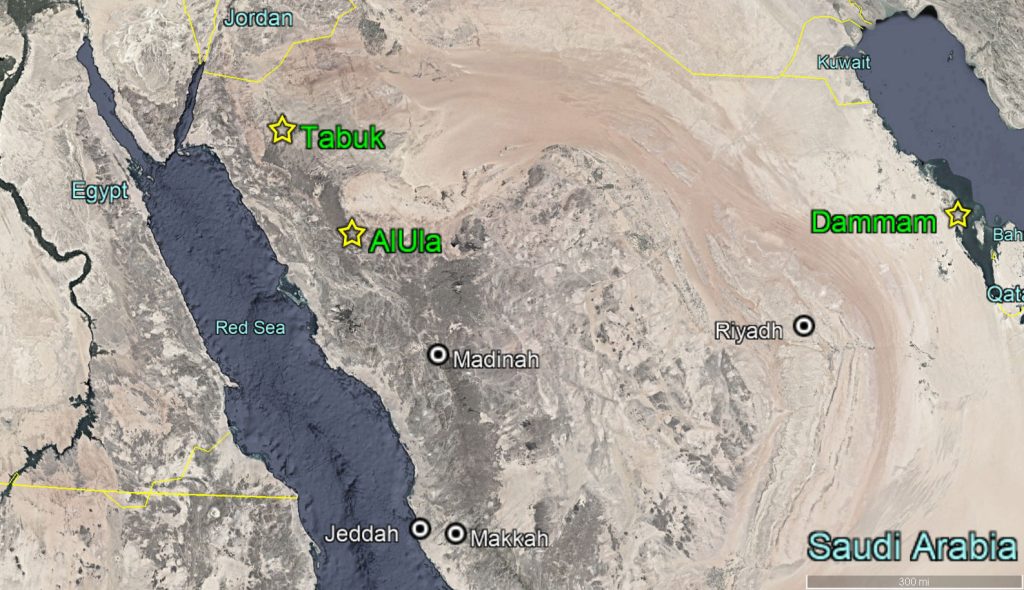
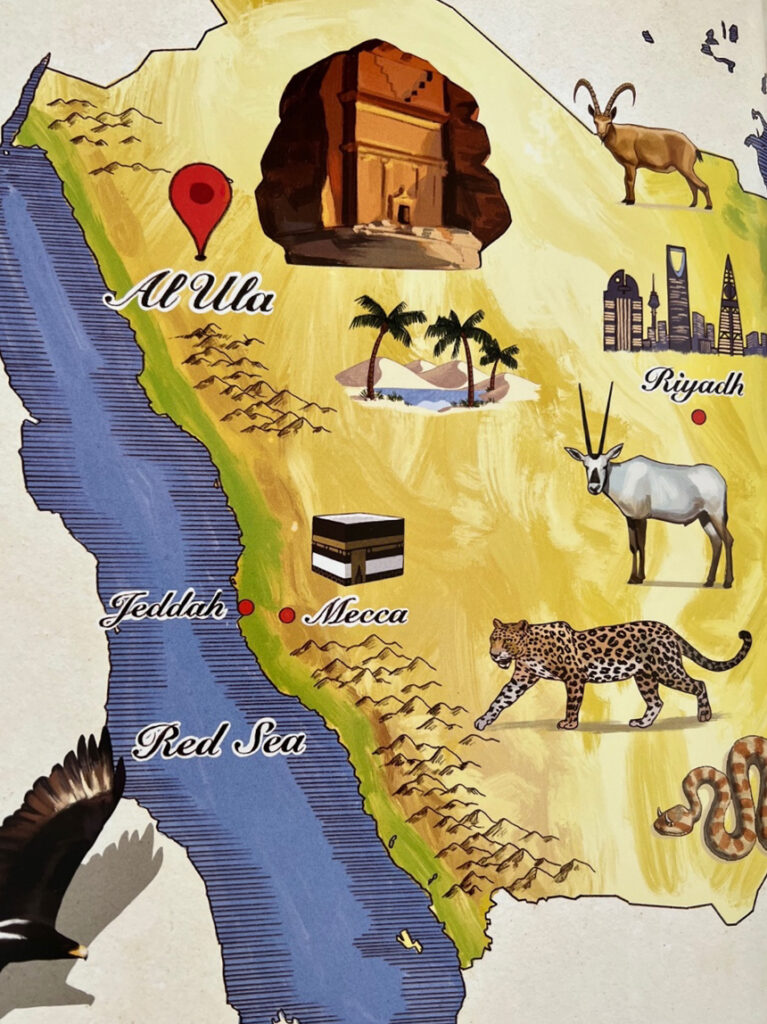
For generations in Saudi Arabia, the Arabian Leopard and its prey were hunted. Their habitat has been steadily eroded by human expansion and development.
The Arabian Leopard is feared to be nearly extinct.
I am a board member of Catmosphere (catmosphere.org), founded by HRH Princess Reema Bint Bandar Al Saud, Saudi Arabian’s first female Ambassador to the United States. One of my goals is to support this organization that reintroduces cats into their native environments—resetting the ecological balance.
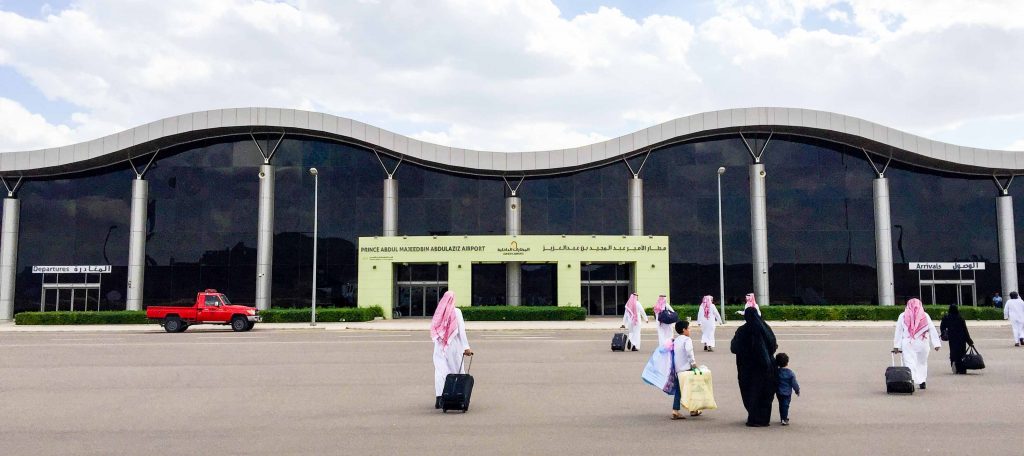
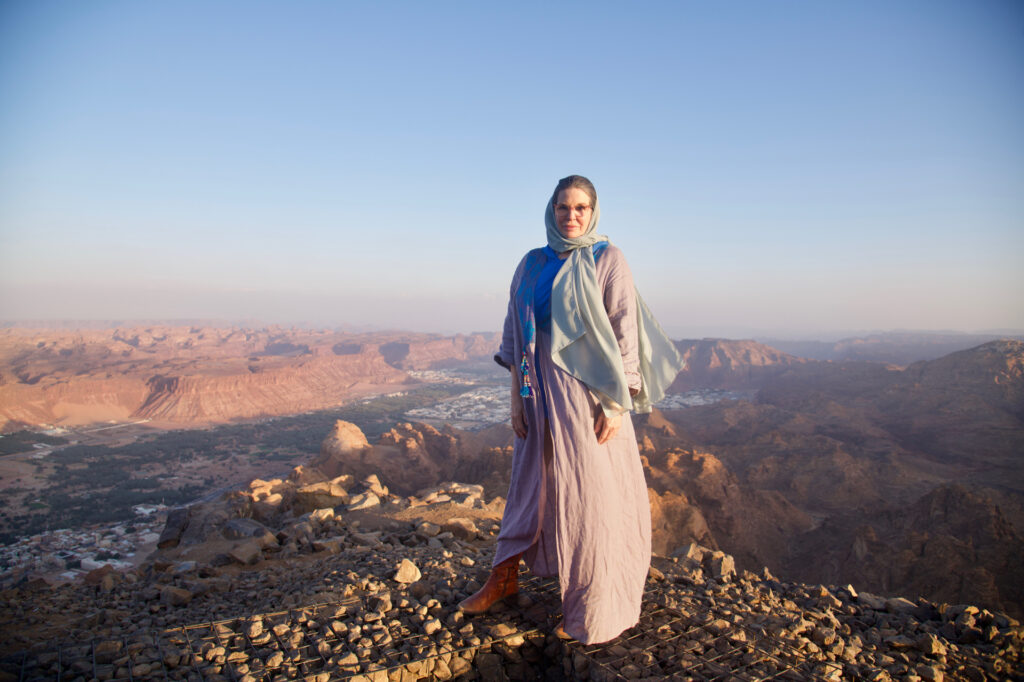
The Kingdom brings to mind images of undulating sand dunes and herds of camels. Upon traveling to the northwest corner of Saudi Arabia, one finds a lush, date-palm oasis surrounded by tall cliffs. Covering nearly 9,000 square miles, AlUla is about the same size as New Jersey.
A long cut in the region’s cliffs, reminiscent of the Grand Canyon in Arizona, provided a passageway for ancient caravan traders. Its palm forests provided travelers food, shelter, and a place to rest their camels.
In AlUla, date palms have thrived since the first millennium BCE, contributing to the region’s status as a cultural oasis and vital stopping point on the ancient spice and incense trade routes.
The region has more than 2.3 million date palms that are said to be more than 100 years old. The annual production exceeds 90,000 tons of fruit.
Sometimes called the “tree of life,” the date palm provided communities with endless uses outside of sustenance. When thatched to make shelter, the fronds offered protection from the desert sun and winds. More artistic weavings produce jewelry and baskets as well as a means of making rope, fencing, and furniture.
The tree’s role is so important that the Saudi Arabian date palm earned inscription on UNESCO’s list of Intangible Cultural Heritage of Humanity in 2019.
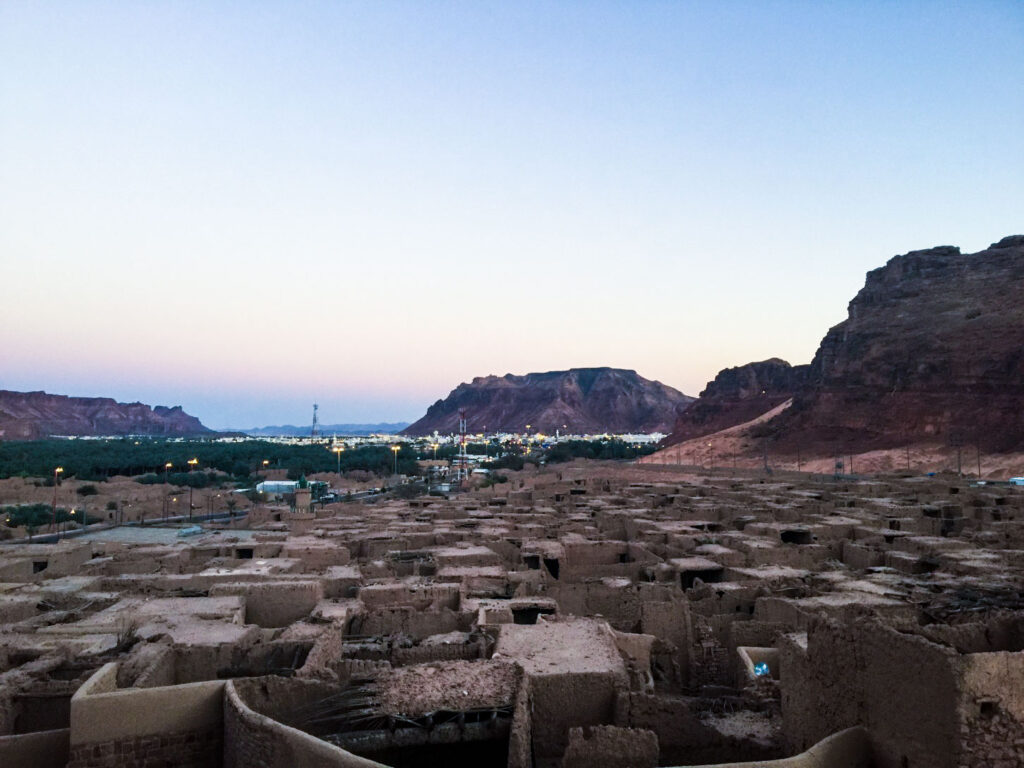
The walled city of AlUla was founded in the 6th century BCE near an oasis in the desert valley with fertile soil and plenty of water. It was located along “Incense Road,” the network of routes that facilitated the trading of spices, silk and other goods through Arabia, Egypt, and India. The town was reconstructed in the 13th century. When the cramped space and poor infrastructure did not meet 20th century standards, it was abandoned by residents for a new town nearby. The last family left in 1983, making it a ghost town.
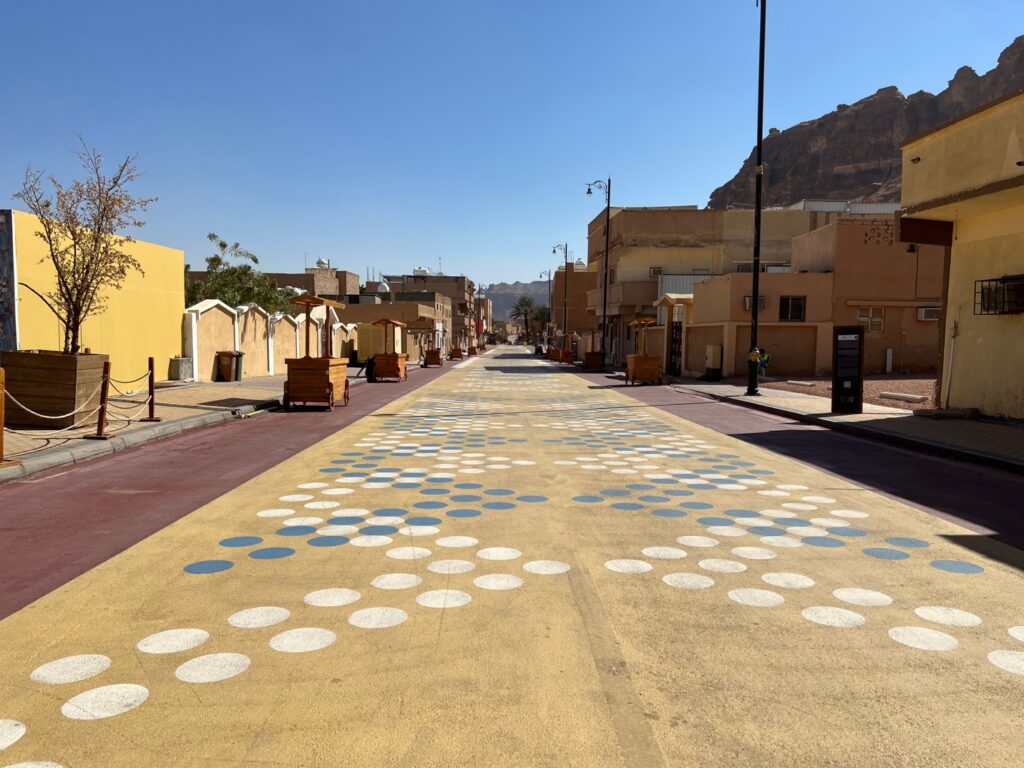
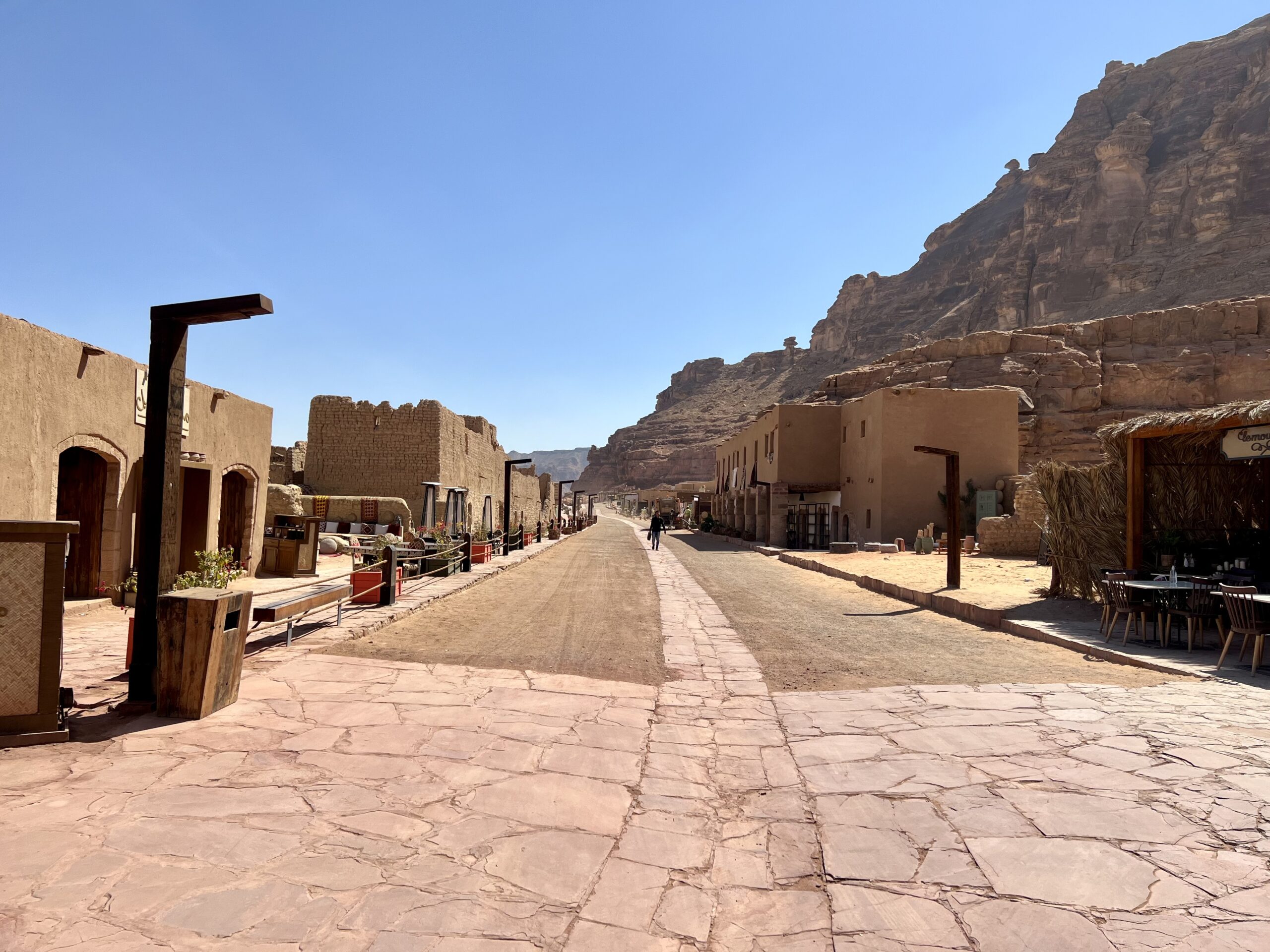
“AlUla, a large and pleasant village with palm gardens and water springs. The pilgrims would halt there for four days to provision themselves and wash their clothes.”
Ibn Battuta, renowned scholar and explorer, describing AlUla in 1328 CE.
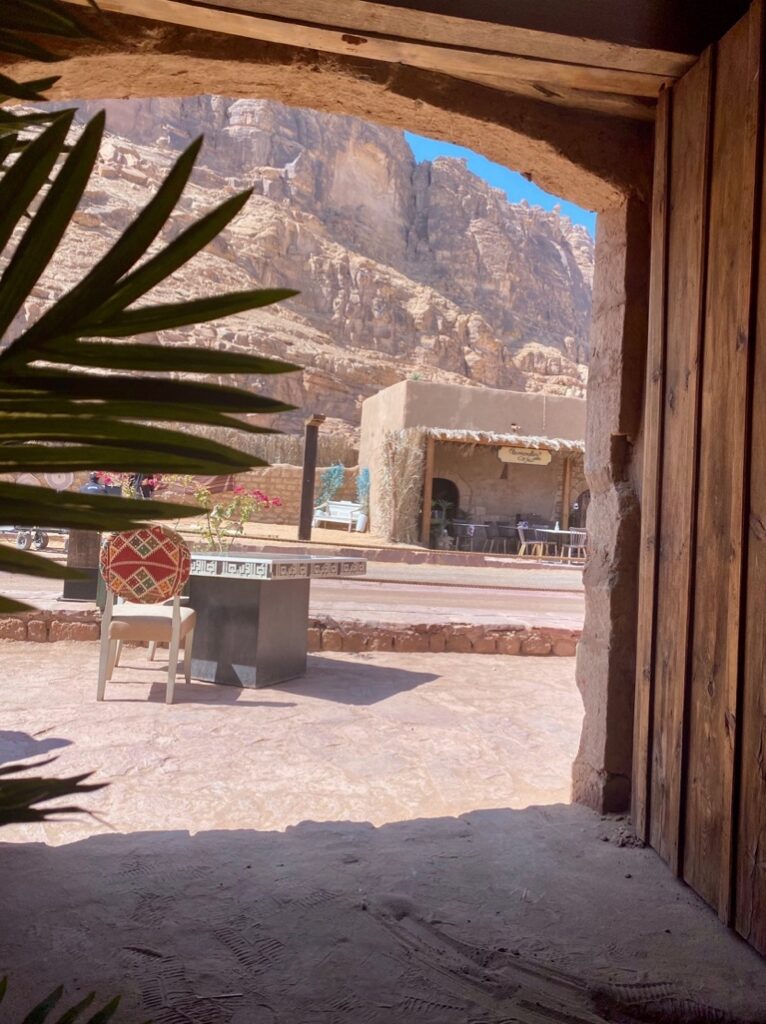
During my last visit to the region in 2018, the norm was that unrelated men and women were not allowed to mix in public. In 2019, that social boundary was eased. Times have changed and are changing even more… look at this!

Common western words derived from Arabic include coffee, cotton, sofa, mattress, admiral, canal, cannon, jacket, sugar, soda, candy, lime, lemon, rice, spinach, sheriff, traffic, and zero.
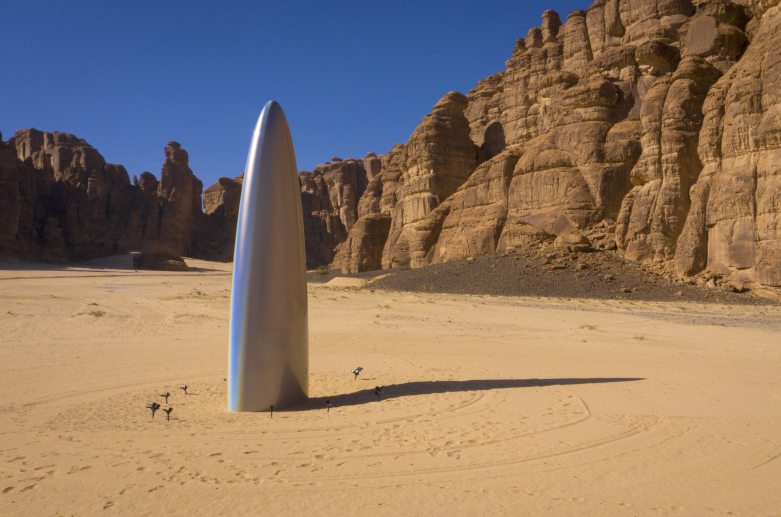
Desert X 2022. Under the theme of Sarab, this outdoor exhibition explored ideas of mirage and oasis, both intrinsic to desert history and culture, which have taken on complex worldwide significance over time. Invited to consider these ancient concepts, participating artists responded with new works that addressed dreams, camouflage, fiction, dis/appearance, extraction, illusion, and myth, while also examining the dichotomy between the natural and man-made worlds.
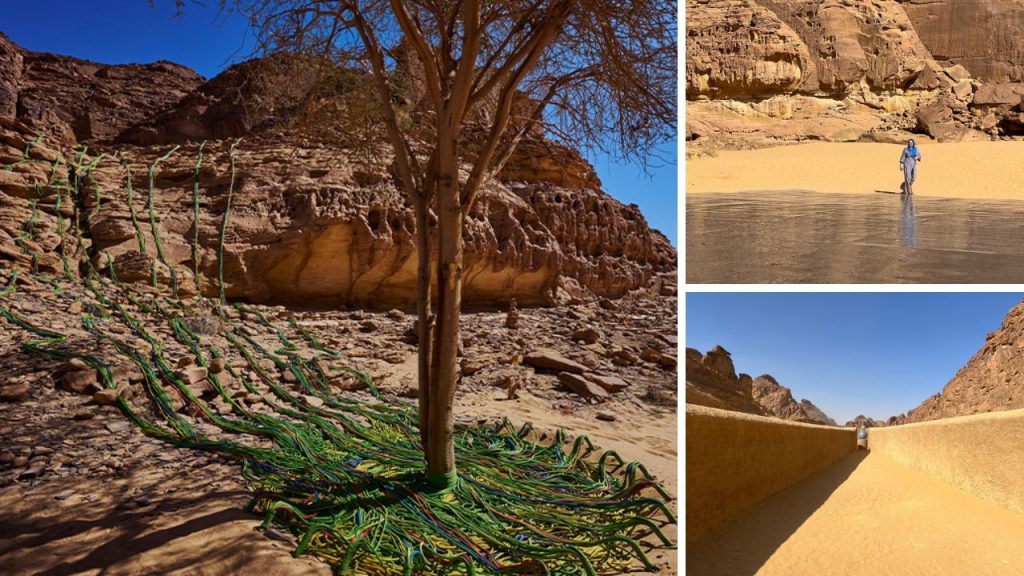
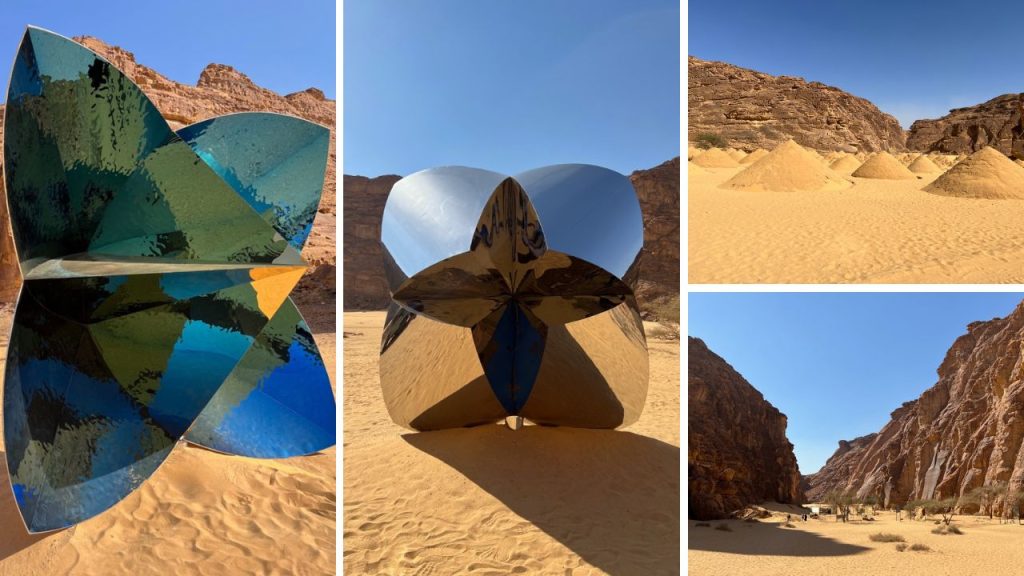

This 2022 exhibition has since closed but every other year going forward a new Desert X will be installed in AlUla.

Falcons can see the movement of their prey from a distance of more than a mile. The resolution of the falcon’s retina is eight times greater than humans. The purpose of its hood is to calm the bird. These birds are so visually oriented that they are not fearful of what they cannot see. Hoods protect birds and allow an ease of control in situations that otherwise could be startling to the bird.

Hawks must be at once kind and fierce, and intelligent enough to unlearn much of their native knowledge. Falcons have historically been used for hunting. Now they are mostly for sport.
Camels are beasts of burden. They can carry a remarkable amount of weight. This is why people refer to them as “ships of the desert.” The ancient camel caravan routes that passed through southwestern Saudi Arabia heading to Makkah and Medina moved tremendous amounts of goods and people.
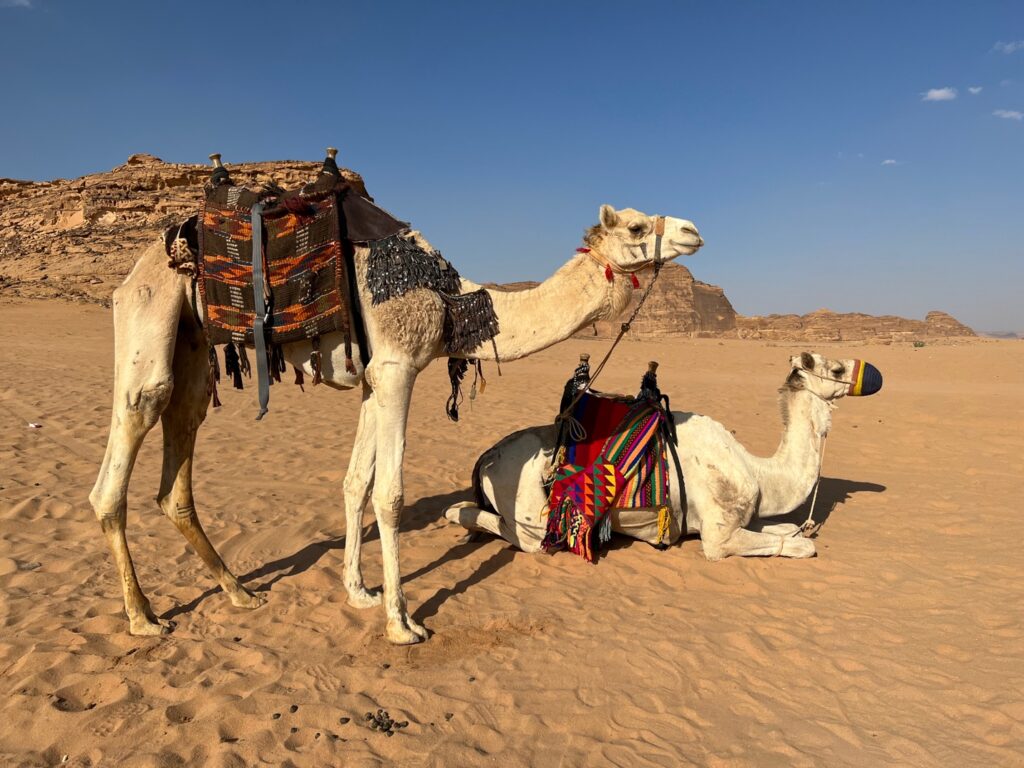
To this day, camels are integral to many Bedouin families, who use the animals to transport their children and homes during their annual migrations. Camels’ nostrils can close to keep sand at bay, and they have bushy eyebrows and two rows of long eyelashes to protect their eyes. Large, tough lips enable them to pick at dry and thorny desert vegetation. Big, thick footpads help them navigate the rough, rocky terrain and shifting desert sands.
Camels can be over seven feet tall at the hump. The hump stores up to 80 pounds of fat, which a camel can break down into energy when sustenance is not available. These humps give camels their legendary ability to travel up to 100 miles without water. The average life expectancy of a camel is 40 to 50 years.
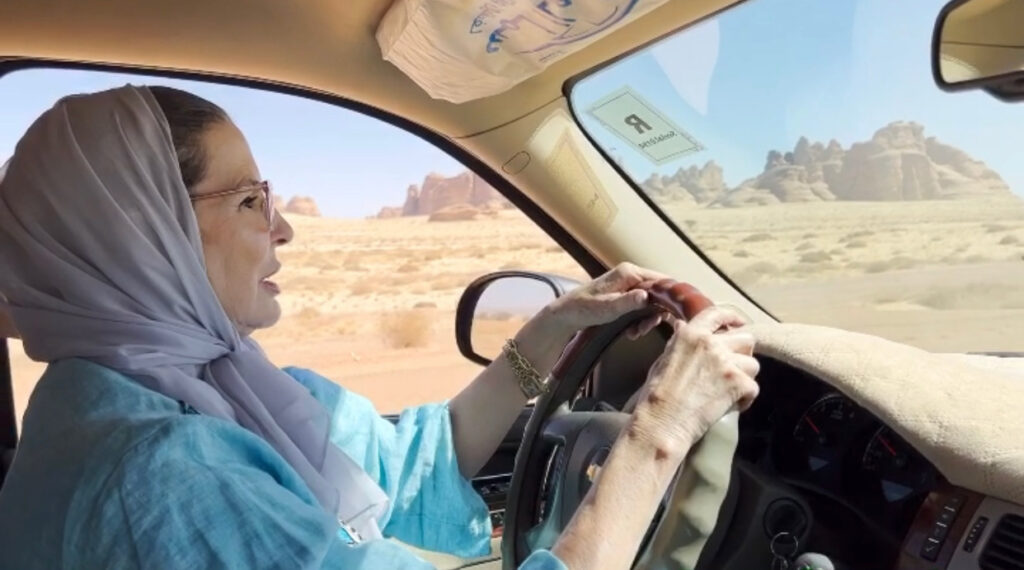
Women can now drive legally. Some women told me they have been driving for years.
AlUla contains Hegra (also commonly referred to as Madain Saleh or Al-Hijr) where there are 131 Nabataean tombs cut into massive rocks spread over more than 8 miles.
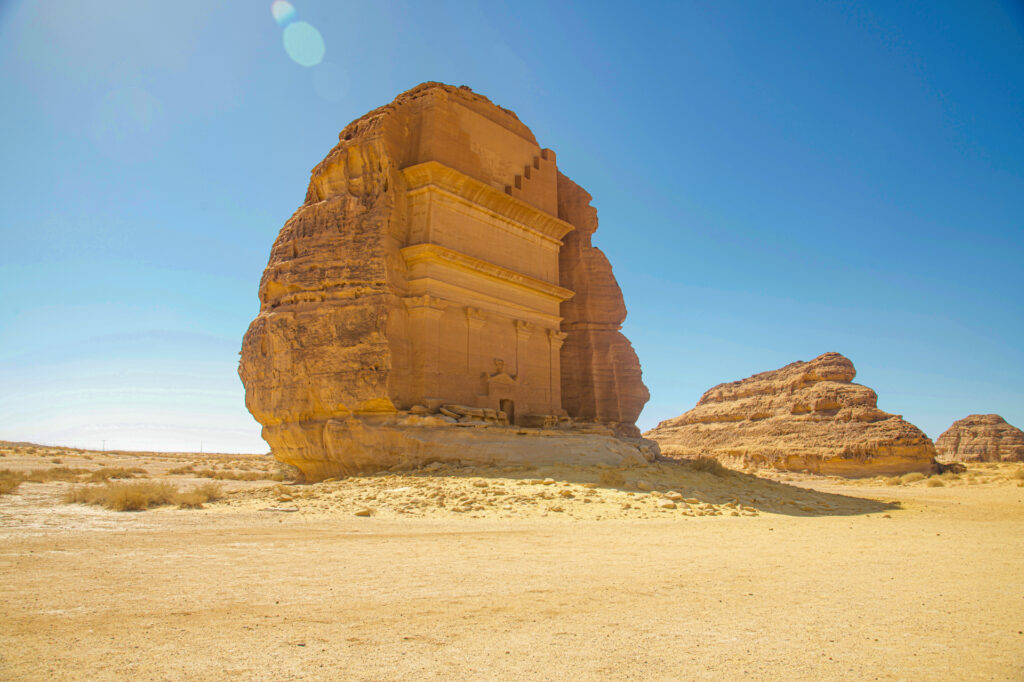
The UNESCO World Heritage Site of Hegra is undoubtedly one of the most iconic locations within AlUla. It is a living museum of preserved tombs, sandstone outcrops, historic dwellings, and monuments, both natural and human-made, that hold 200,000 years of largely unexplored human history. Saudi Arabia has long been a crossroads of ancient civilizations—a place of deep, constantly evolving history. For thousands of years, northwest Saudi Arabia attracted people who came to take advantage of the abundant resources offered by its fertile oasis.
AlUla was long a vital crossroads along trading routes running from southern Arabia, north into Egypt, and beyond. With oases dotting the area it offered much-needed respite for weary travelers and was a popular place to rest, commune, and recharge.
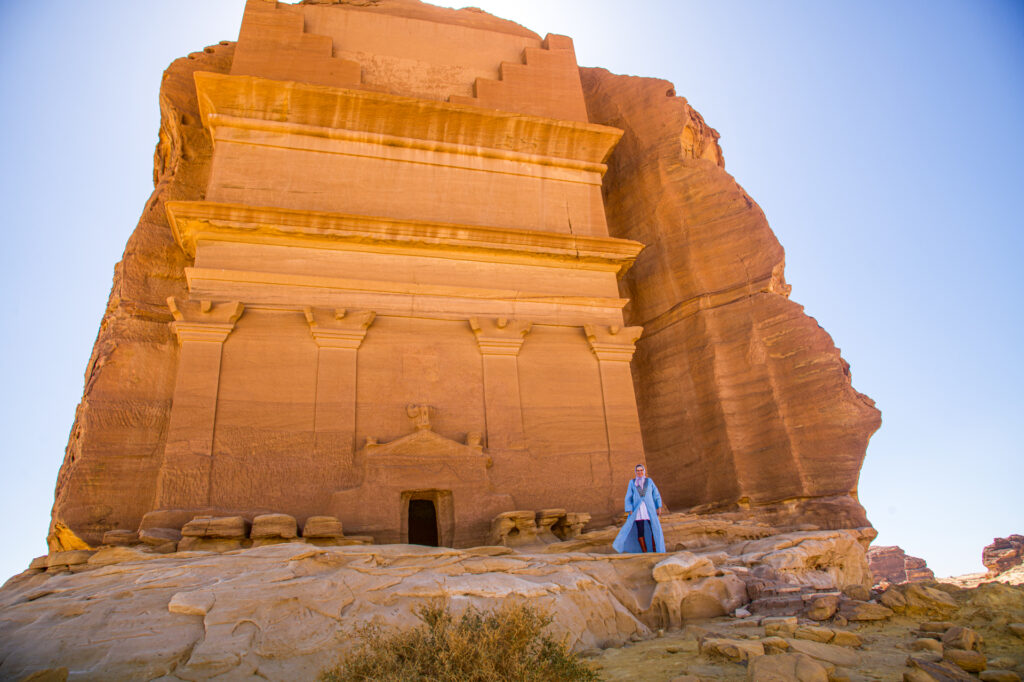
The Hegra site served as the “second city” to the Nabatean people. Its large boulder formations rise high from the earth and feature facades carved from the sandstone rocks. Inscriptions and drawings cover the tomb walls.
The Nabatean inscriptions are a combination of Assyrian imprints with Egyptian and Greek stylization on the remaining parts of the facade.
Hegra is the largest outdoor museum in the world.
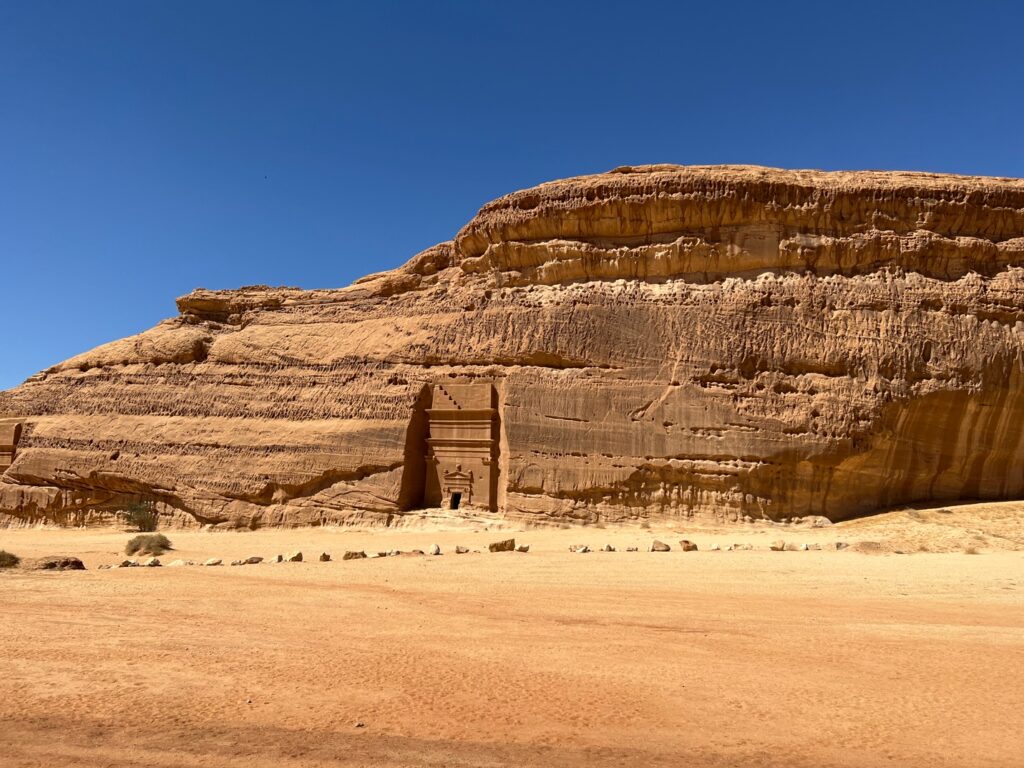
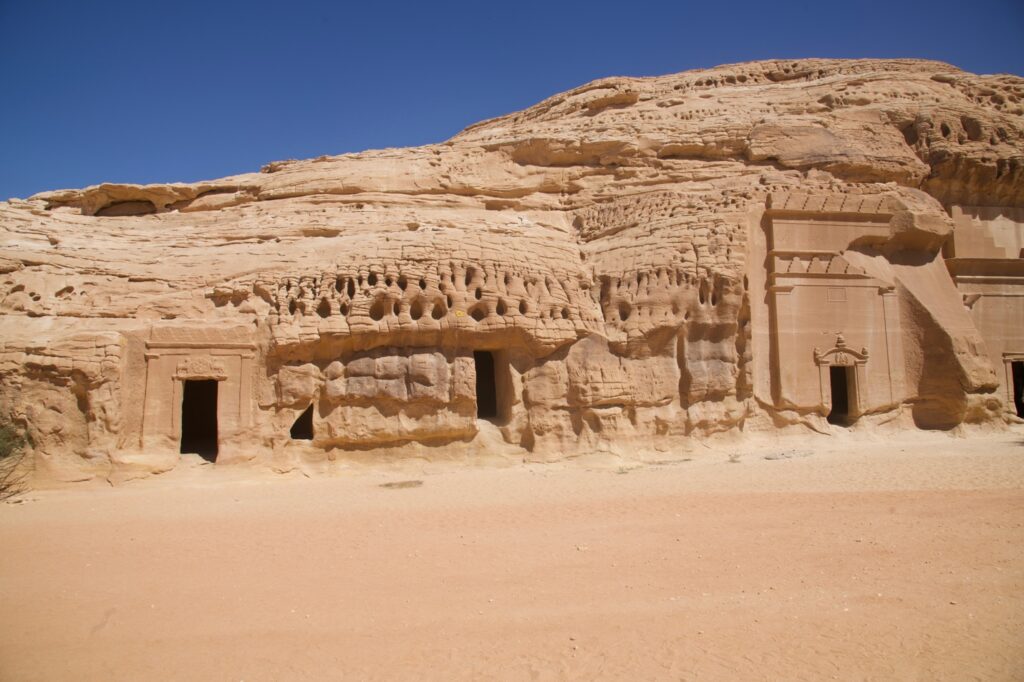
In an arid landscape of large rock formations and cliffs, hundreds of tombs have been carved into the rock faces. They create beautiful architectural vistas as far as the eye can see.
Hegra is Saudi Arabia’s pre-eminent pre-Islamic archaeological site, dating to the Nabataean kingdom in the first century. It was the southernmost settlement of the Nabataean people, whose capital was in Petra, Jordan.
The absence of foot traffic as well as Saudi Arabia’s dry desert climate has kept Hegra remarkably intact. While Petra’s facades are slowly disintegrating, these tombs are stunningly well preserved.
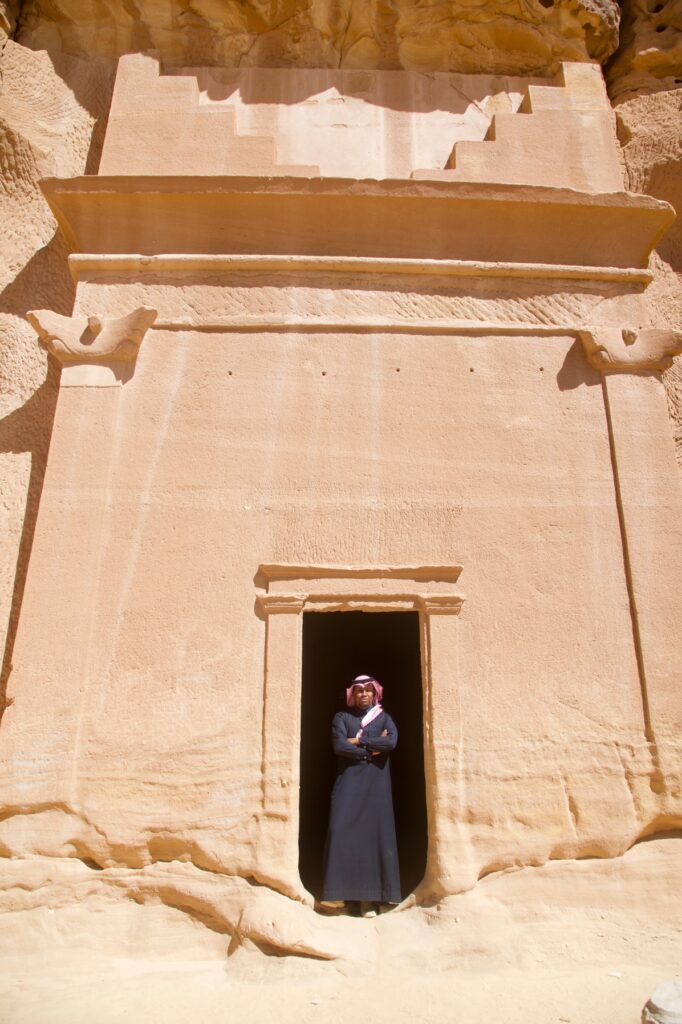
Hegra began a period of decline after it fell to the Romans in 104 CE. Overland trade routes moved to newer, maritime routes through the Red Sea. The defeated Nabataeans moved away completely, leaving their enigmatic carvings, chambers, and tunnels as the only signs they were ever there.
“Little remains of the old civil generations of El-Hejr (Hegra,) the caravan city; her clay-built streets are again the blown dust in the wilderness. Their story is written for us only in the crabbed scrawling upon many a wild crag of this sinister neighborhood, and in the engraved titles of their funeral monuments, now solitary rocks, which the fearful passenger admires, in these desolate mountains…”
From Travels in Arabia Deserta, by British poet and explorer Charles Montagu Doughty, published in 1888.
Imagine traders and camels approaching Hegra, bringing baskets full of frankincense from Yemen and Oman. These resinous nuggets, extracted from the Boswellia sacra tree, are as valuable as they are rare. They would have been destined for the wealthiest Romans, Greeks, Egyptians, and Israelites.
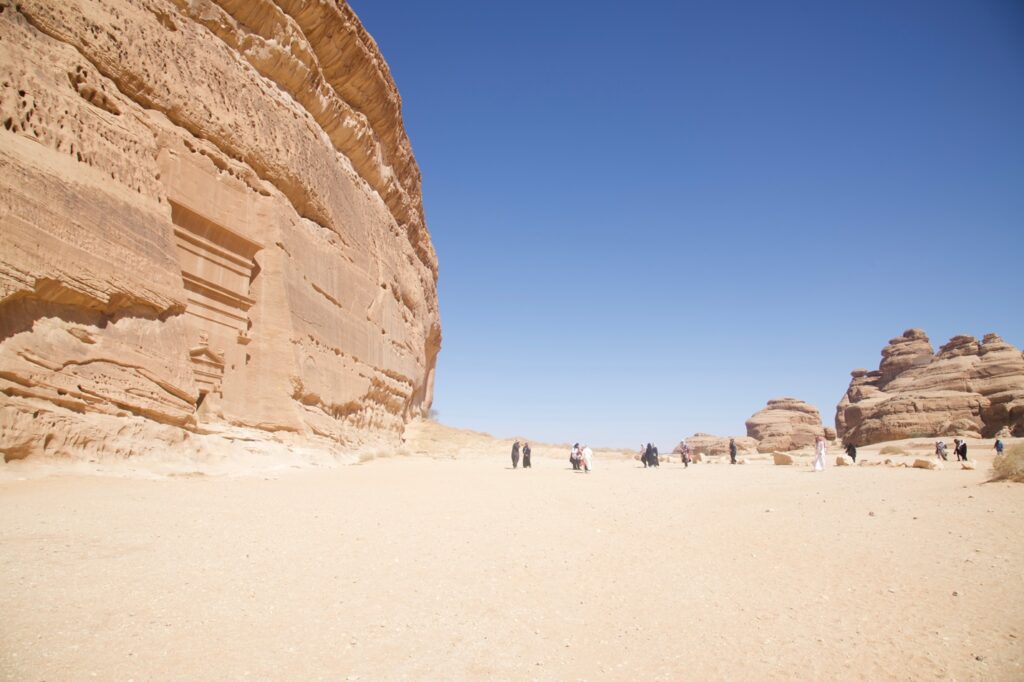
Nabateans are recognized as a highly developed culture who were able not only to endure the harsh climate of the region but to thrive in it.
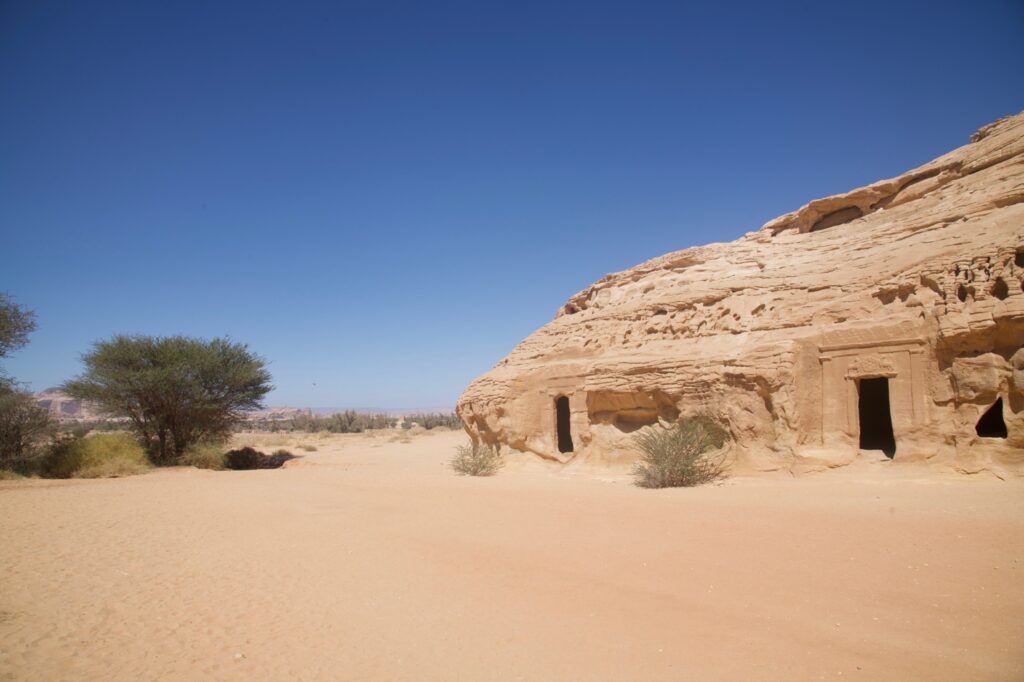
Nabataeans controlled trade routes to Rome and were tough nomads. Their primary defense was melting into the desert and waiting for their enemies to die of thirst and starvation.
[su_lightbox type=”image” src=”https://ncusar.org/blog/wp-content/uploads/2023/02/Single-Pages-EXPERIENCE-ALULA-BROCHURE-ENGLISH-31-1080×1451-1.png”]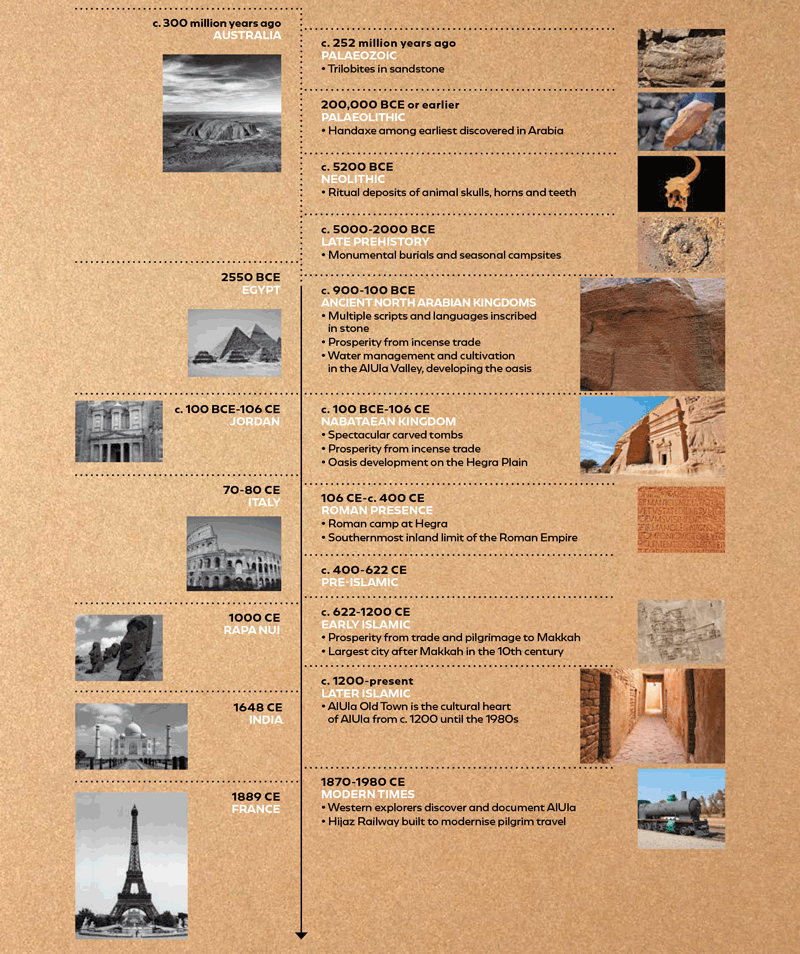 [/su_lightbox]
[/su_lightbox]
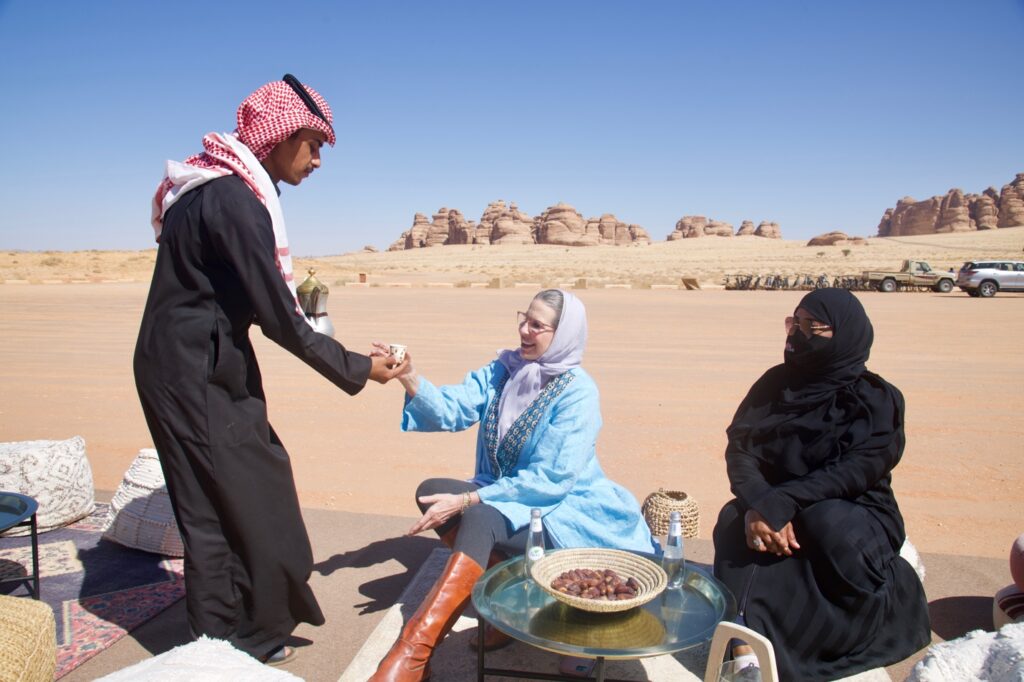


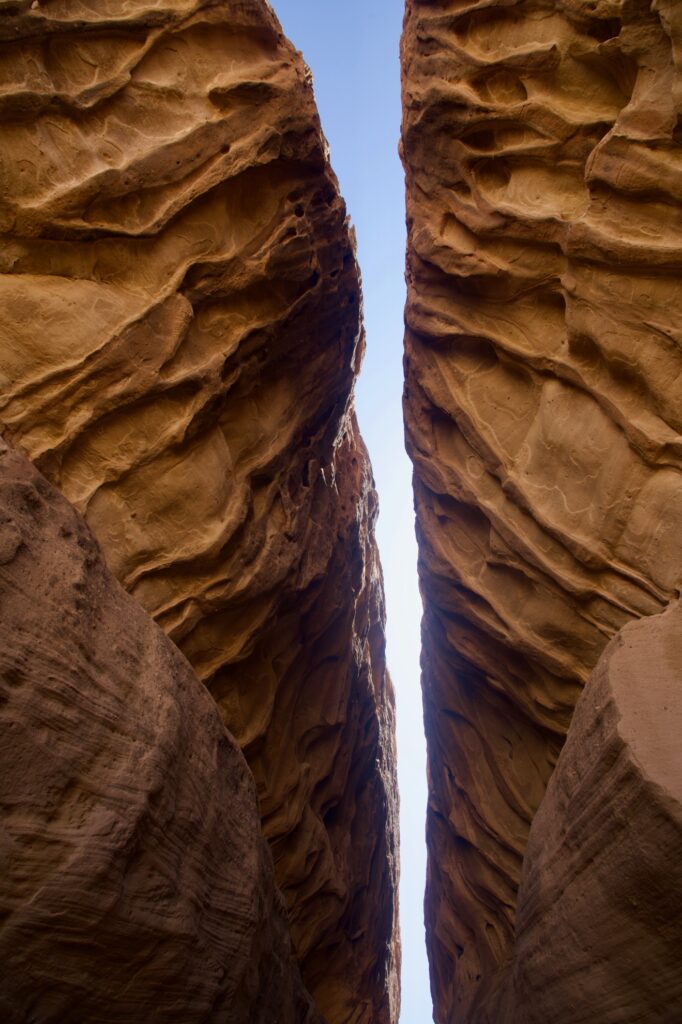

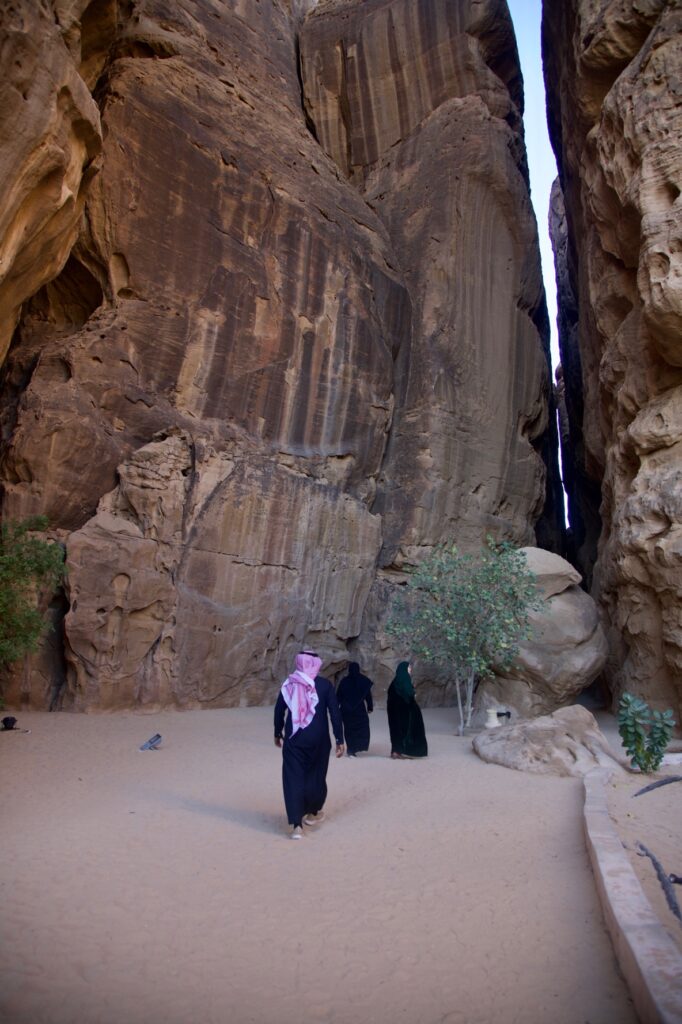
Shallal Café. The majestic natural rock formation and the height of the towers is breathtaking. It is thought to have been under water thousands of years ago.

When walking into the corridor, the sand beneath ones feet is the dominant sound. There is a very narrow slit that one needs to crouch and slide through before entering the café. I have no idea how they get the supplies into the restaurant. (Watch and listen to this above video.)

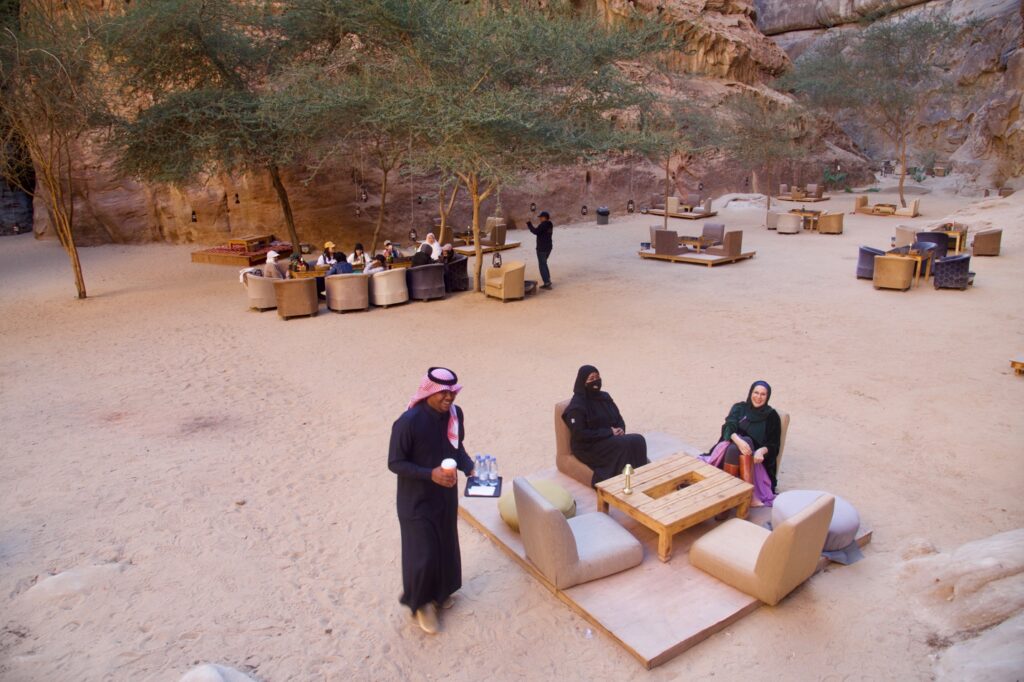
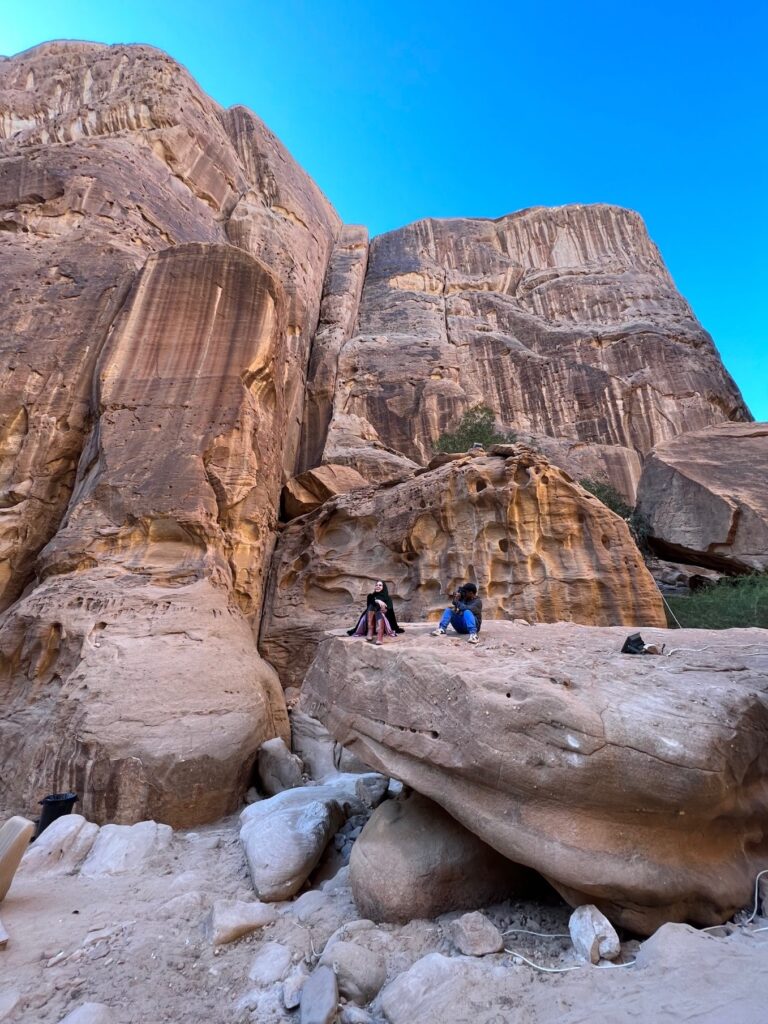
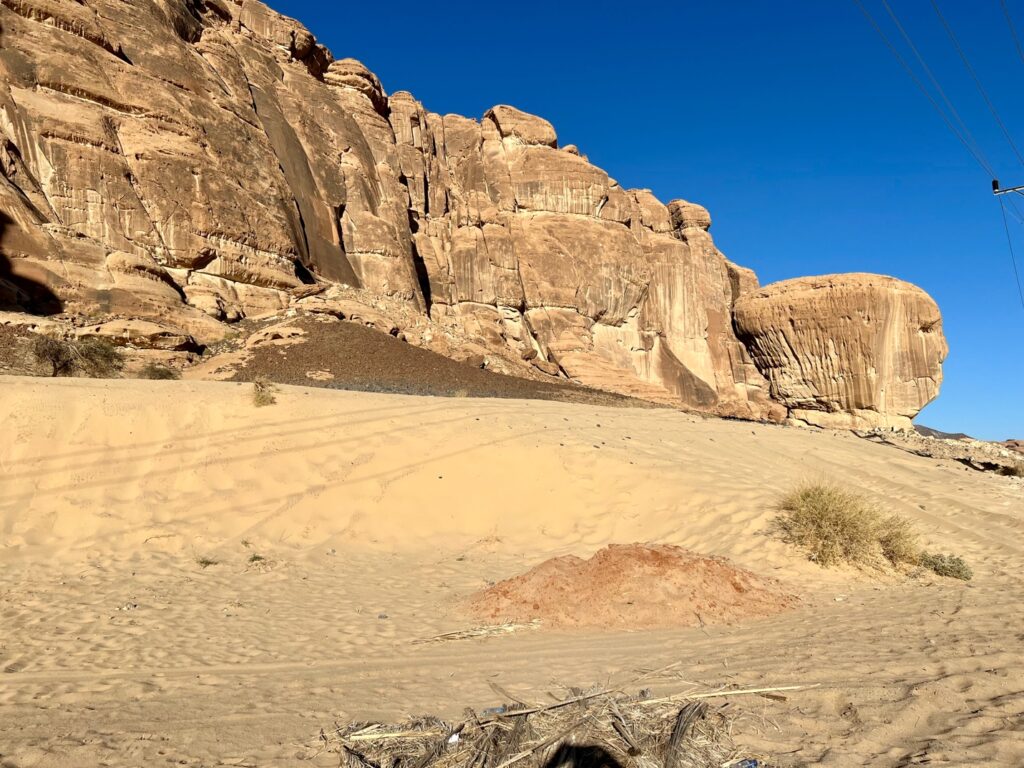

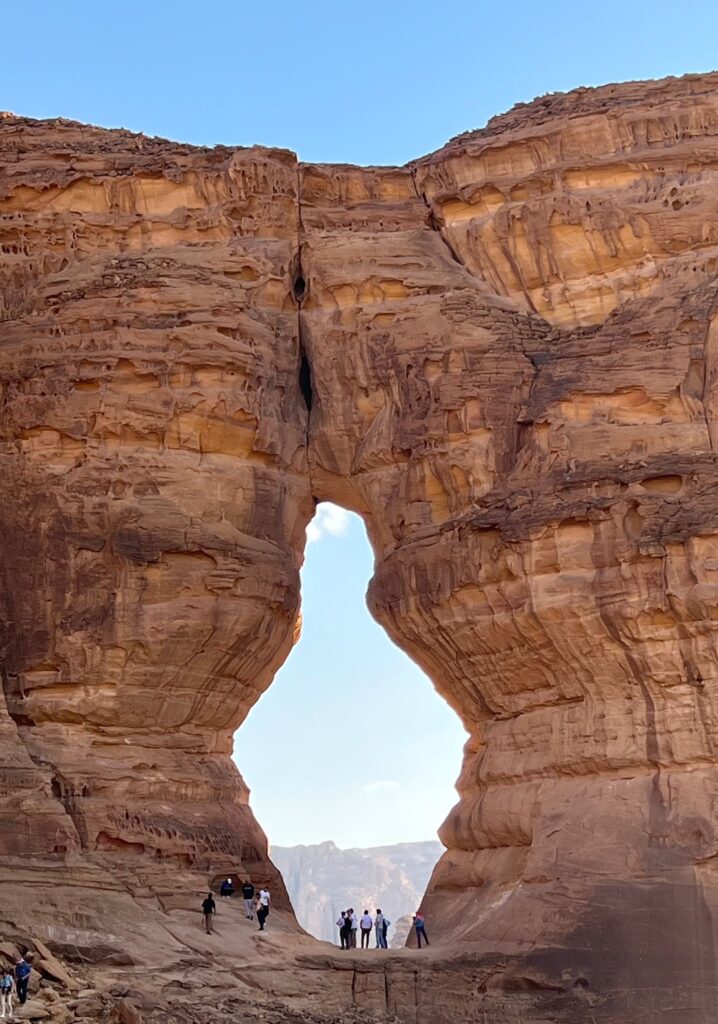


Unlike the ornate, hand-carved facades of nearby Hegra, the trunk and body of the monolith is red sandstone. Elephant Rock was created by natural forces—millions of years of wind and water erosion.
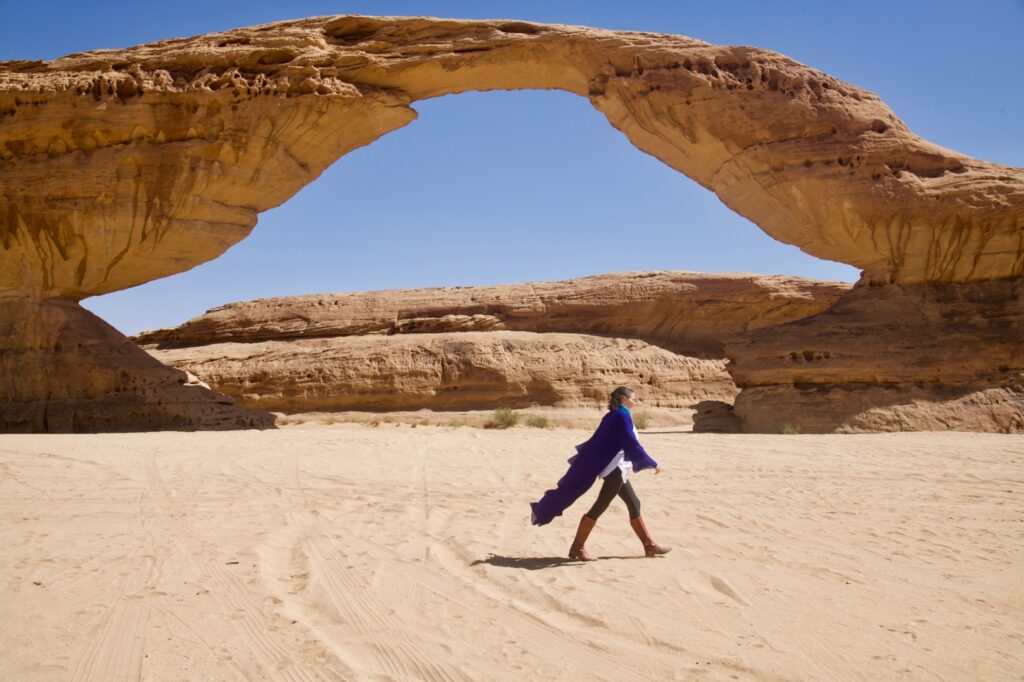
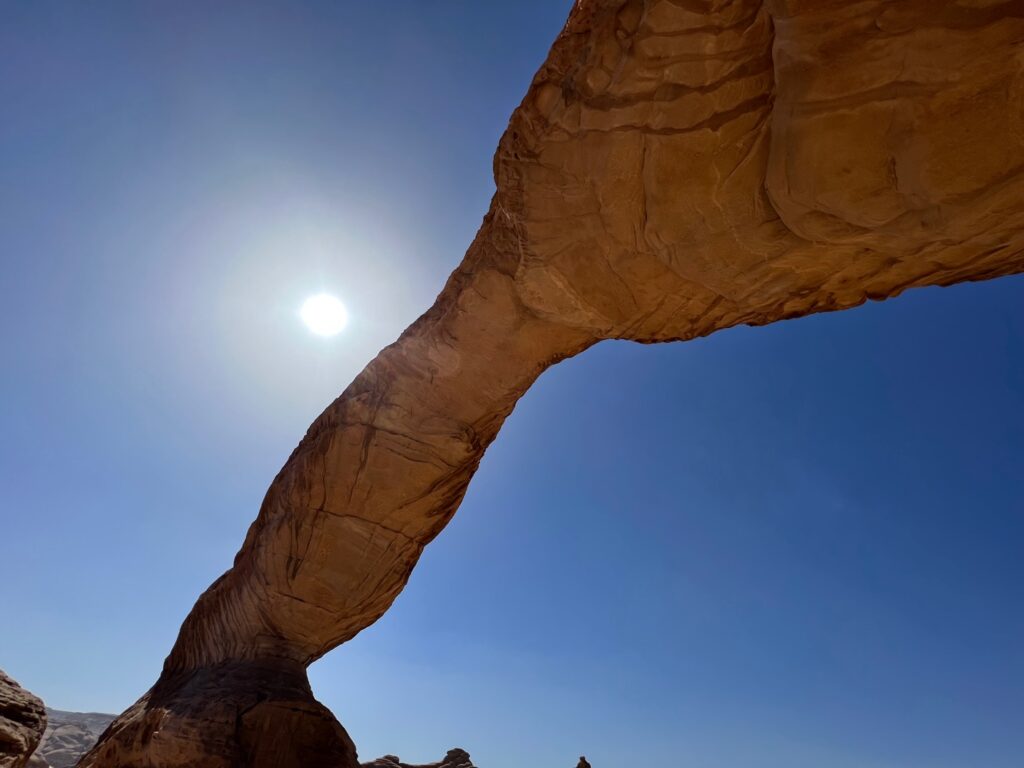
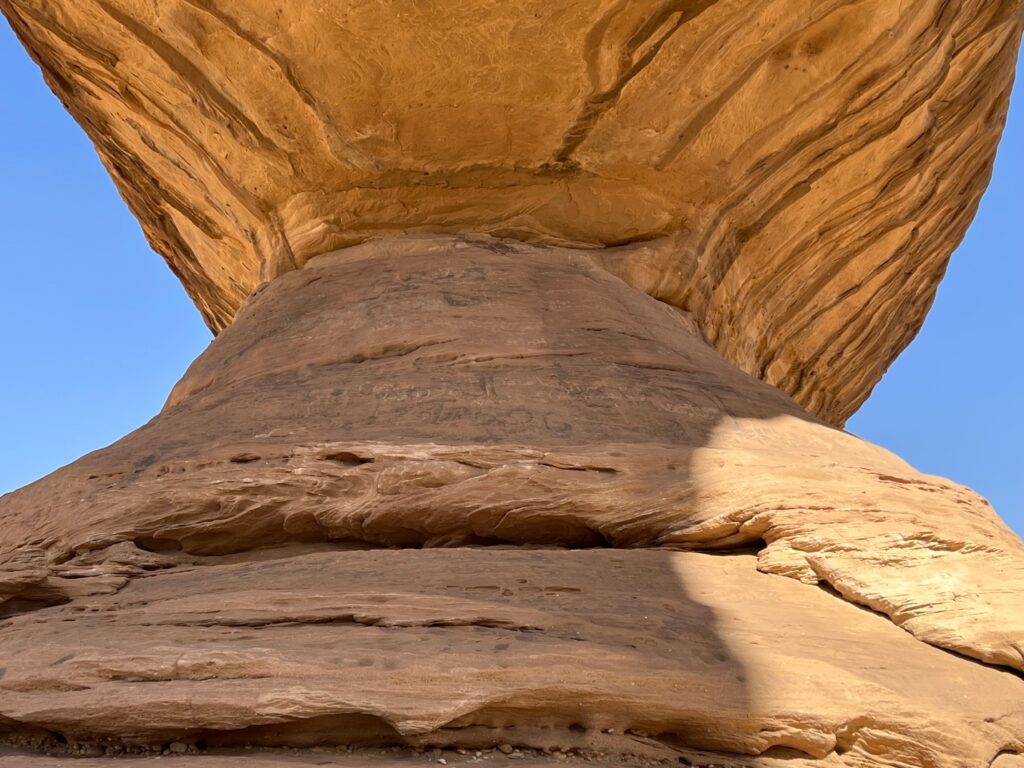
Banyan Tree AlUla Hotel and Resort then under construction.
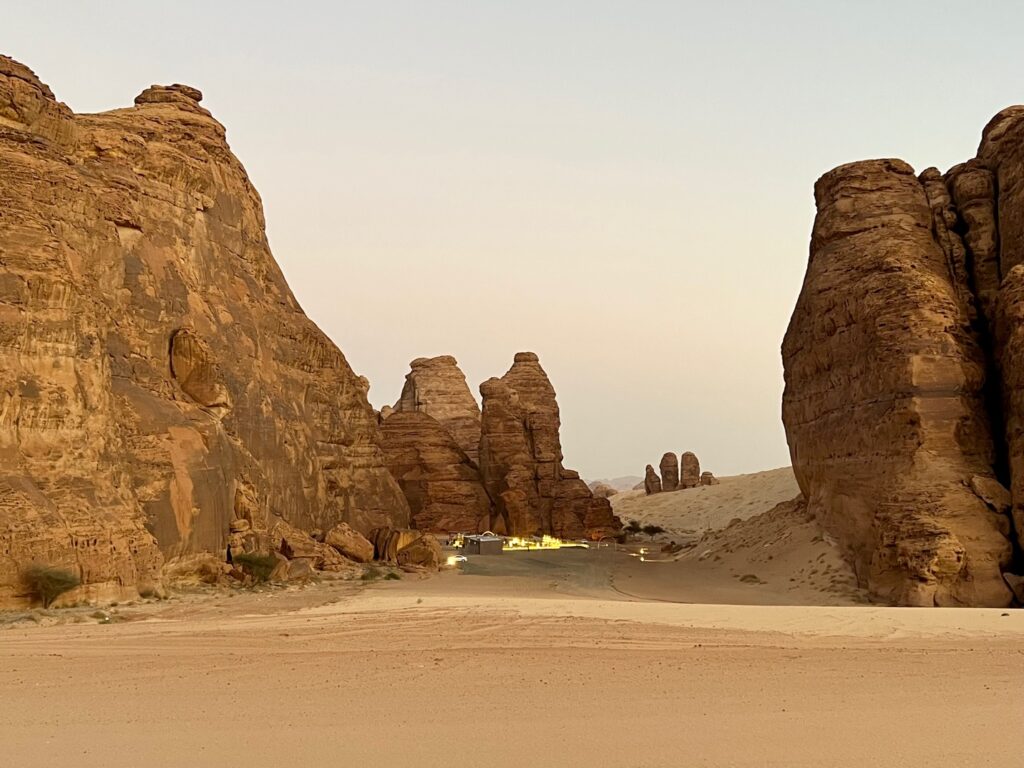
Whereas before one would view a tent or caravans in the desert, the situation today is different. This modern lounge in the desert serves food and coffee of all kinds, Arabic, American and Turkish. Live music is an attraction as well. The coffee culture is a tradition that dates to the 11th century.
Maraya. This building is a stunning piece of art set in the desert canyon of Ashar Valley. Designed to blend into the surrounding landscape, it rises from the sand like a mirage. The state-of-the-art structure is covered in 9,740 mirrored panels reflecting AlUla’s beauty, making it the largest mirrored building in the world according to Guinness World Records.

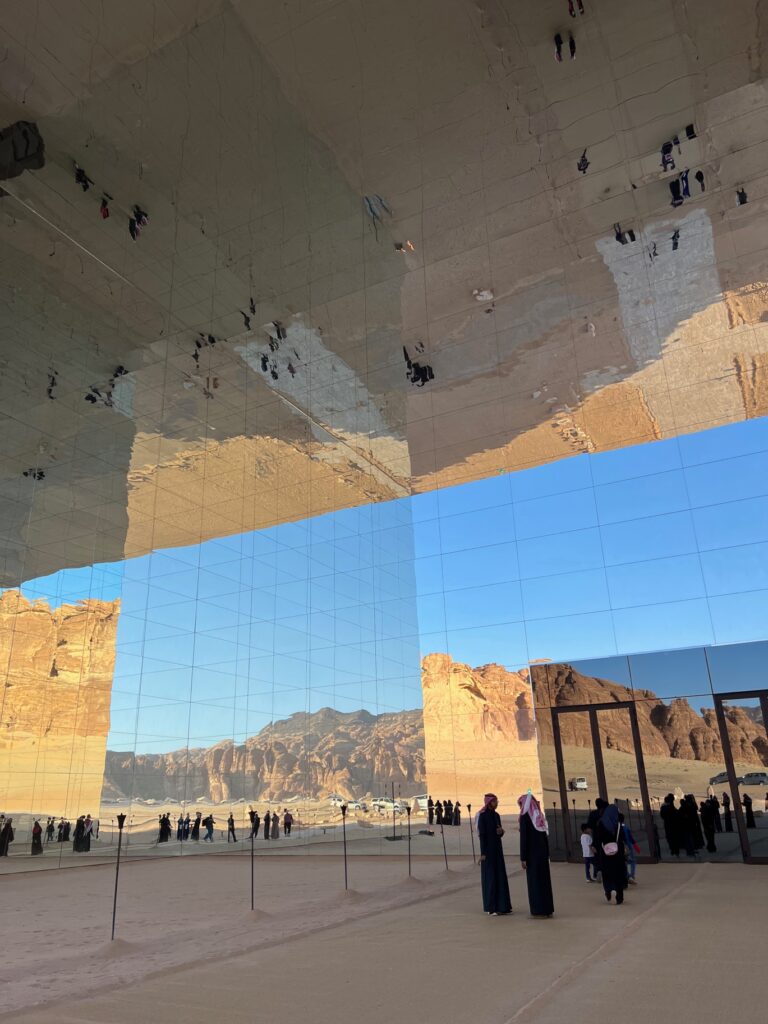
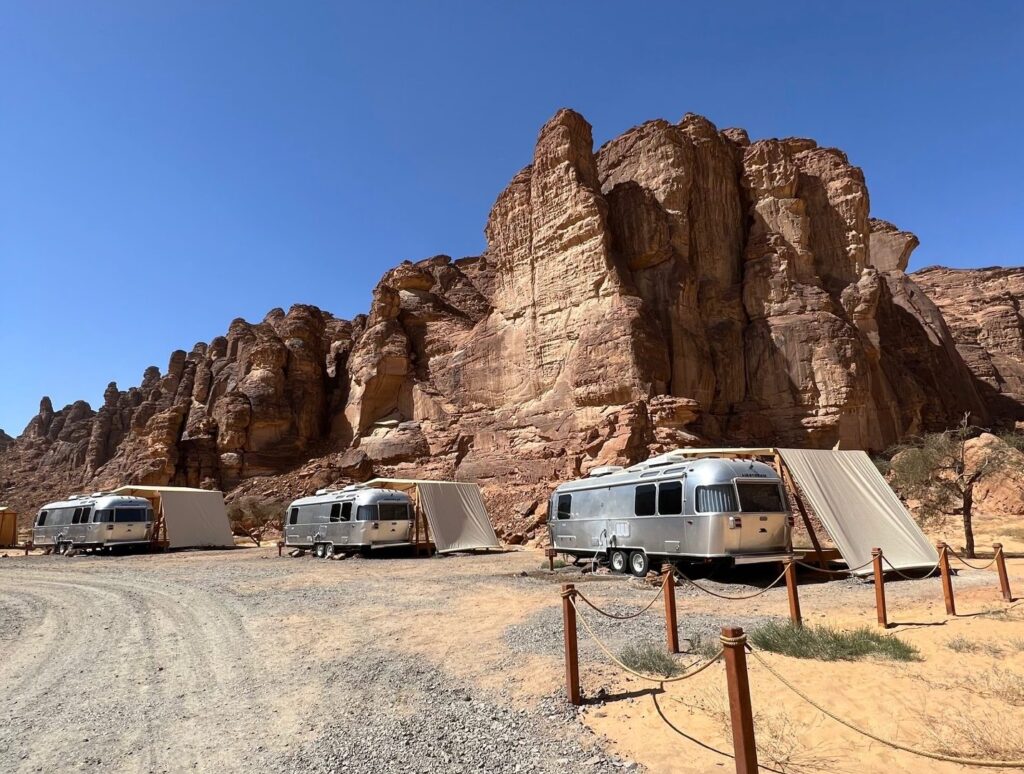


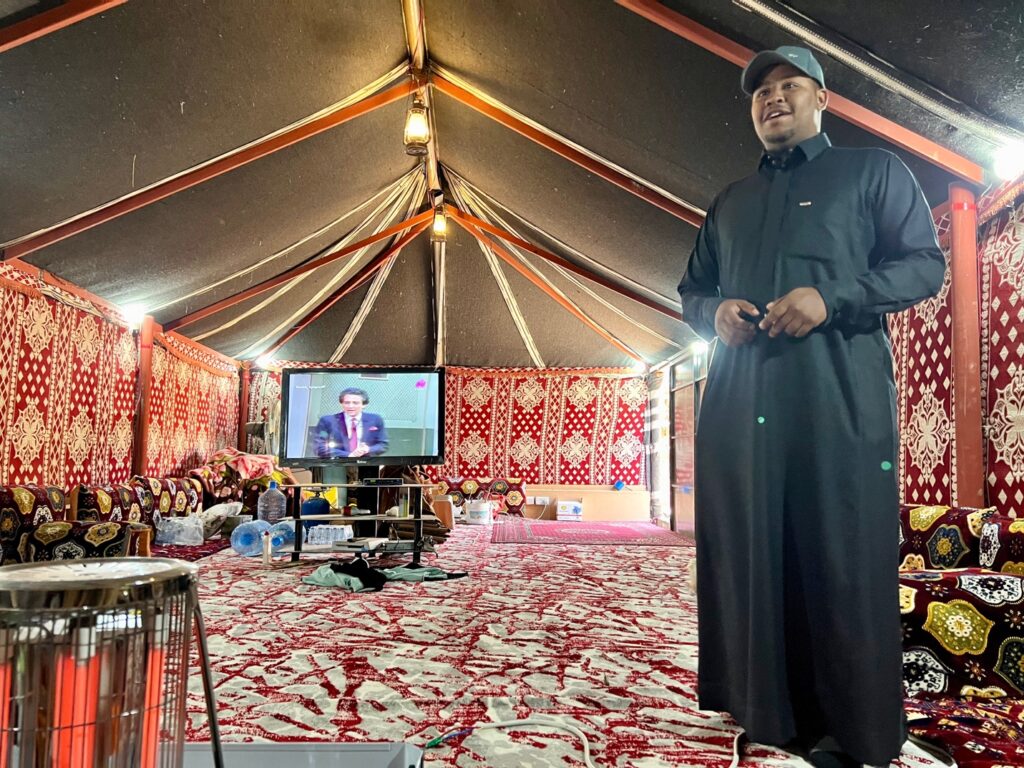
Bedouins have traditionally lived in large black tents called byoot shaar (houses of hair) because they were woven from black goat’s hair. They were ingeniously designed to be adjusted to catch or block desert winds, depending on what was needed at the time.
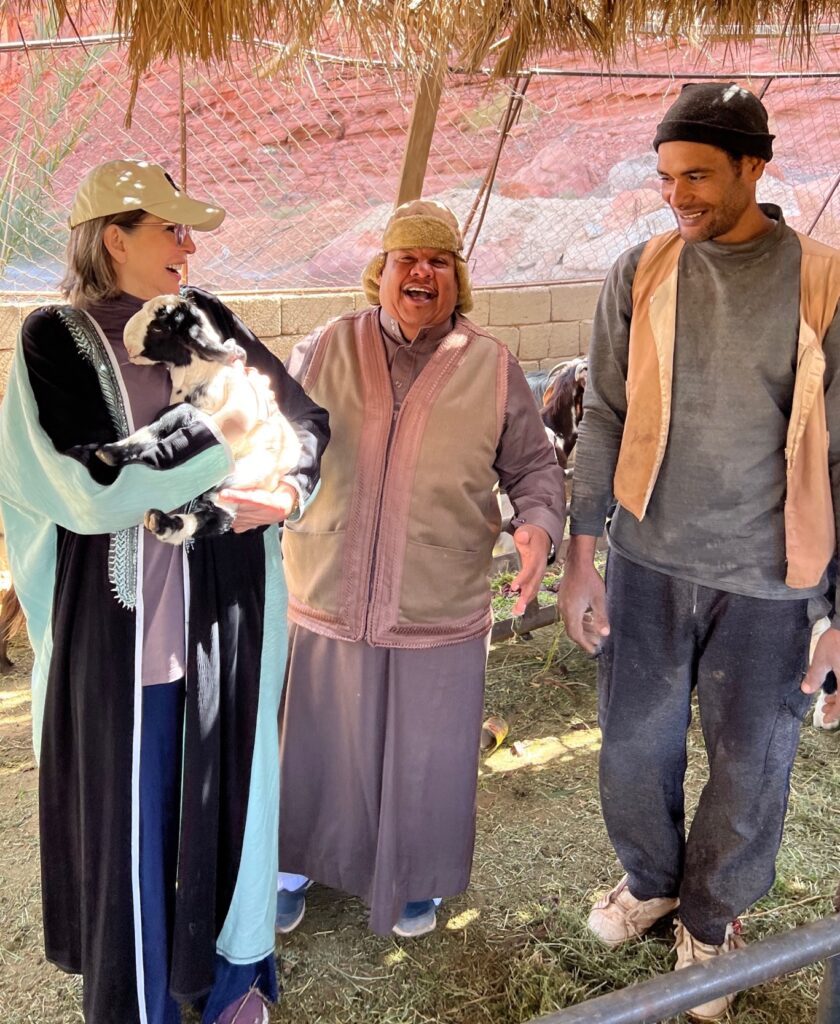
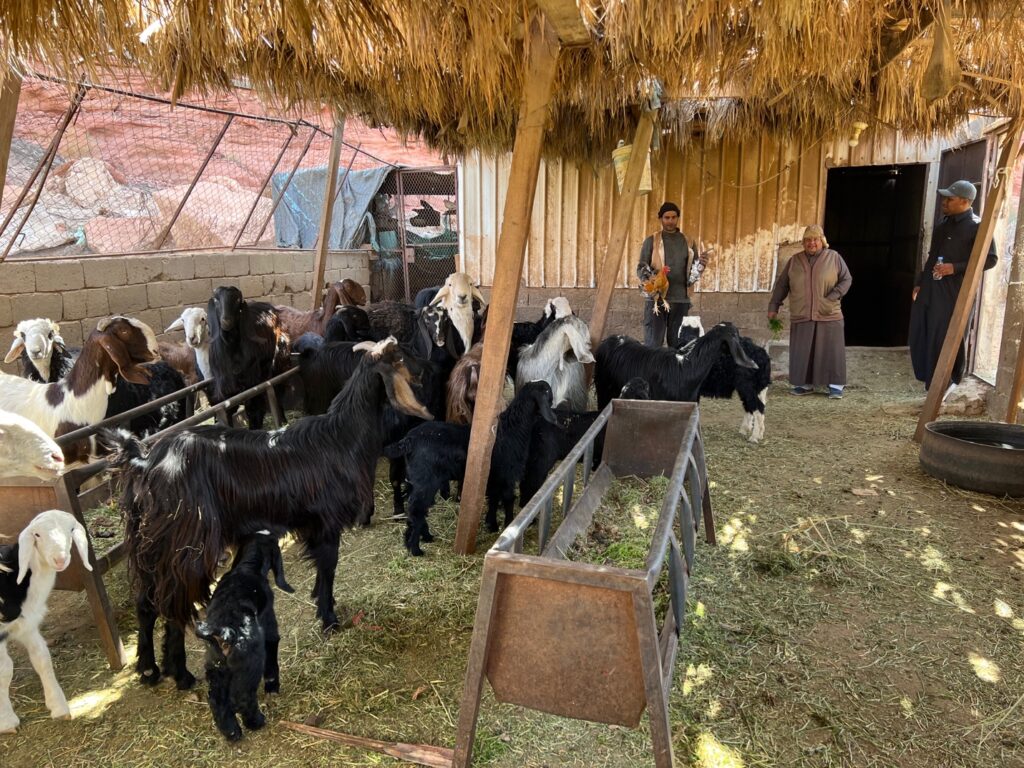
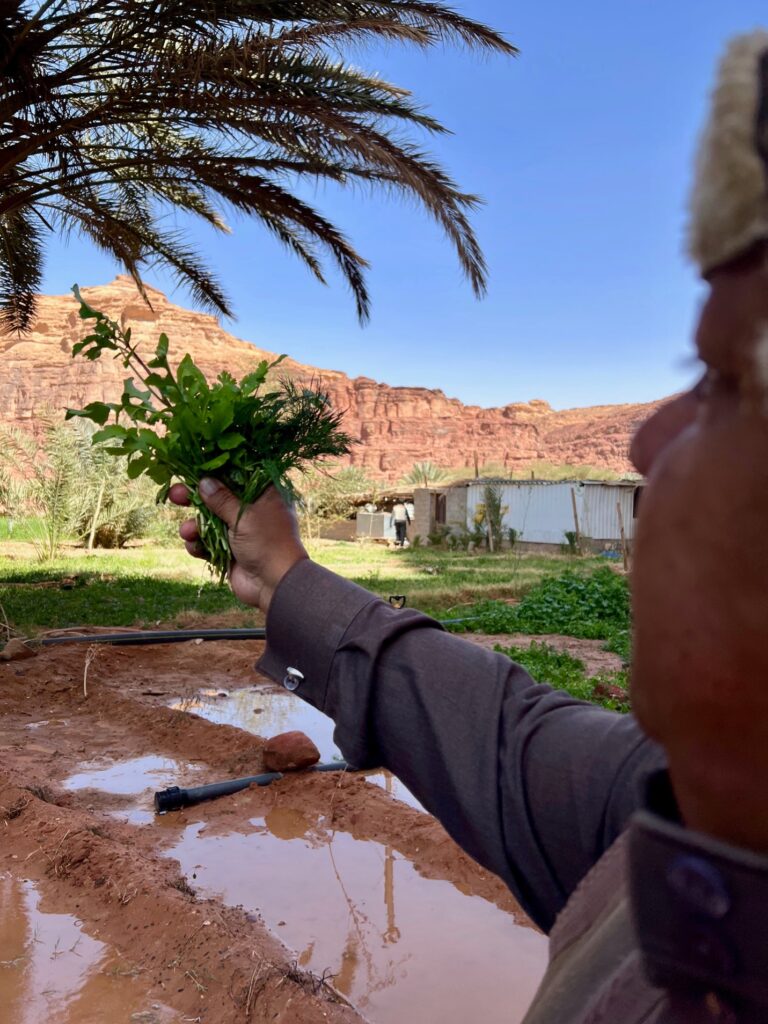
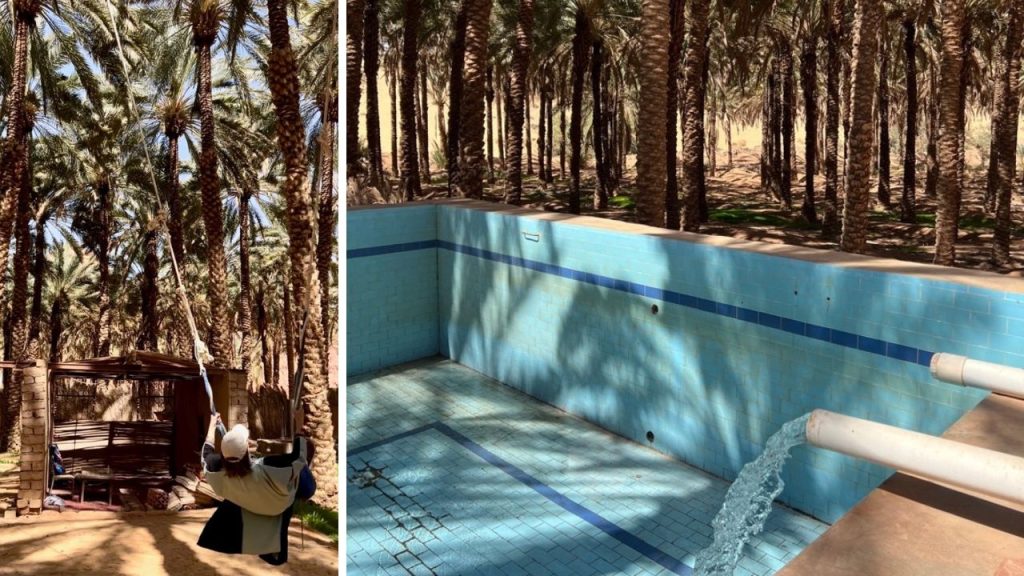
Fresh clean well water fills the pool…a true luxury in the summer months.
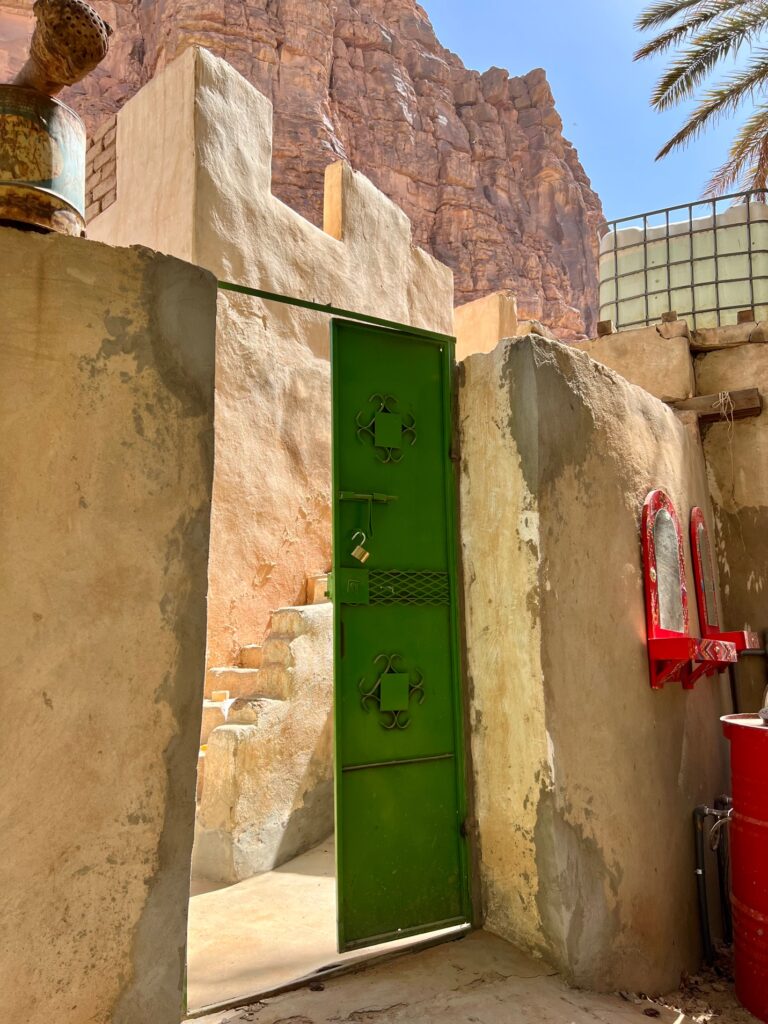
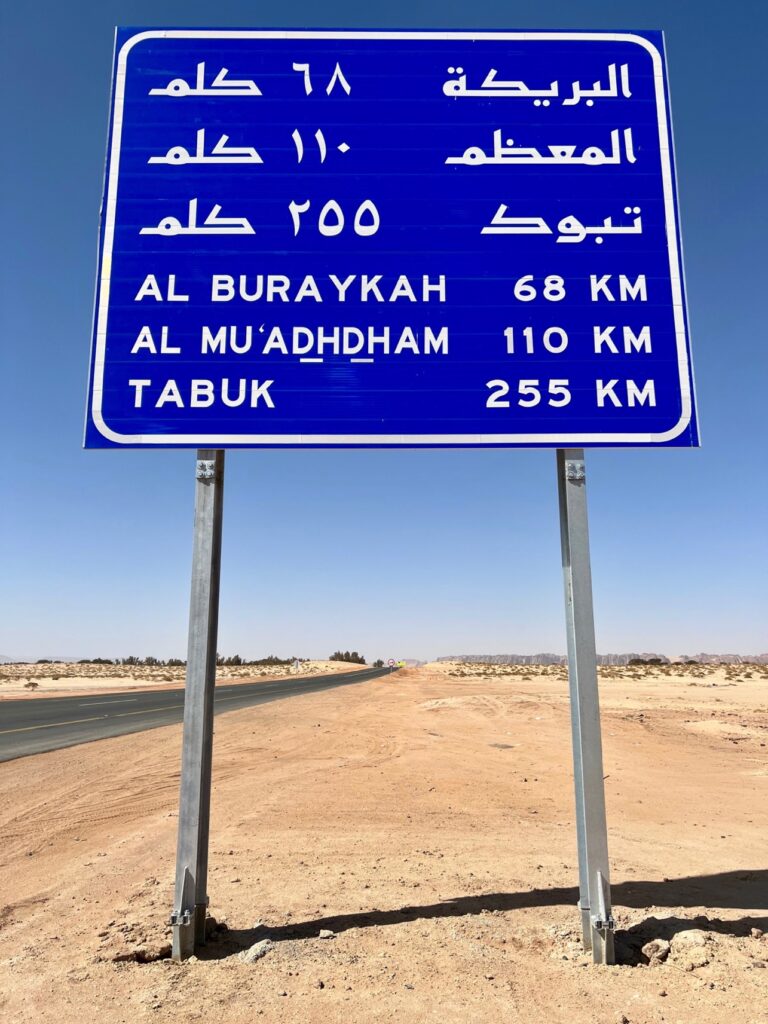
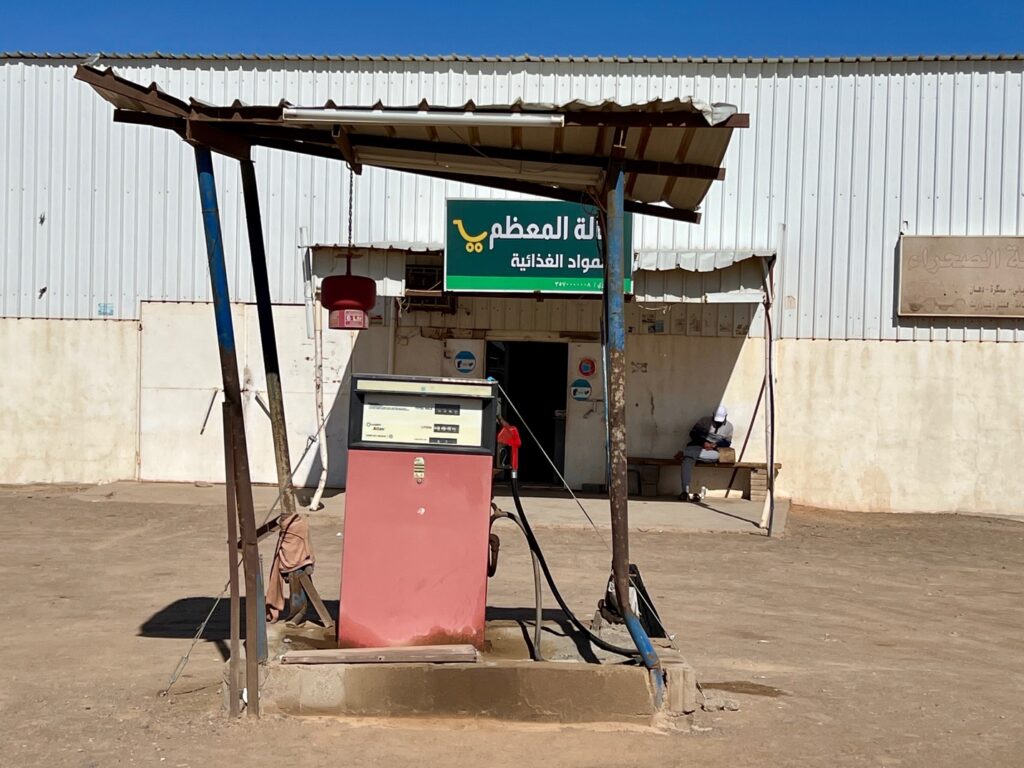
We stopped at the Tabuk Camel Racetrack to watch the exercising of the camels.
Talal dropped me off at a hotel before he returned to AlUla.
The juxtaposition of the modern mall with Tabuk’s ancient castle is charming. Here groups of teenagers gather on the mall.
In 2022, more than 260 tons of roses and other cut flowers were shipped out of Saudi Arabia to the rest of the world. How many people know that Saudi Arabia is a leading flower exporter?
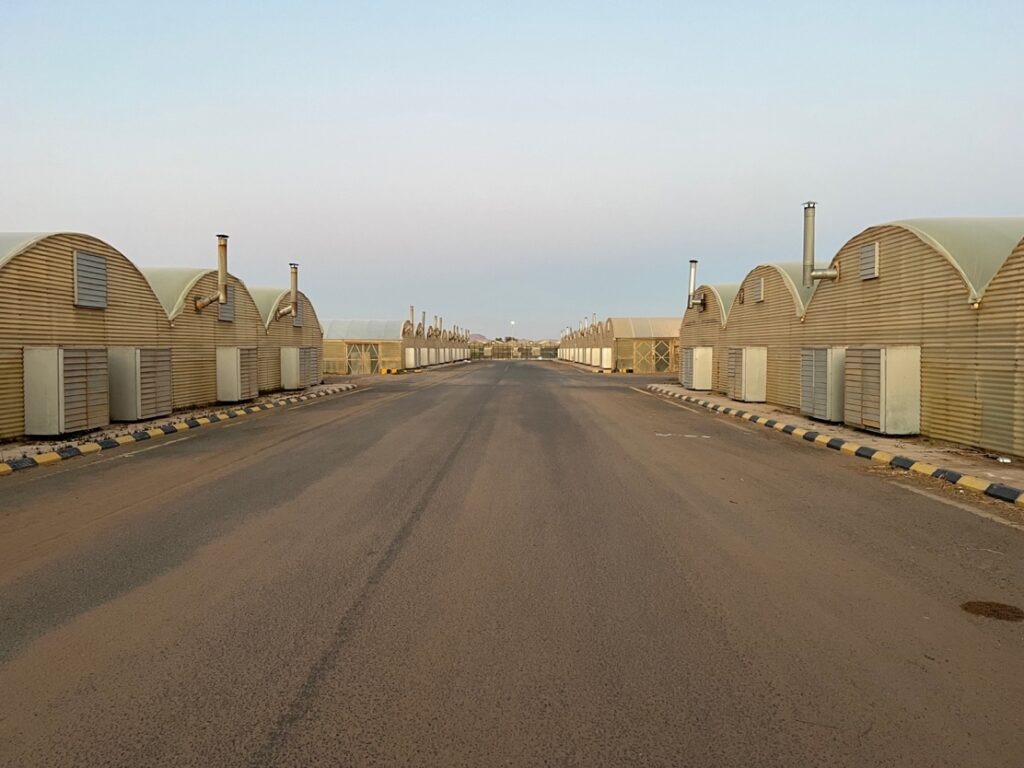
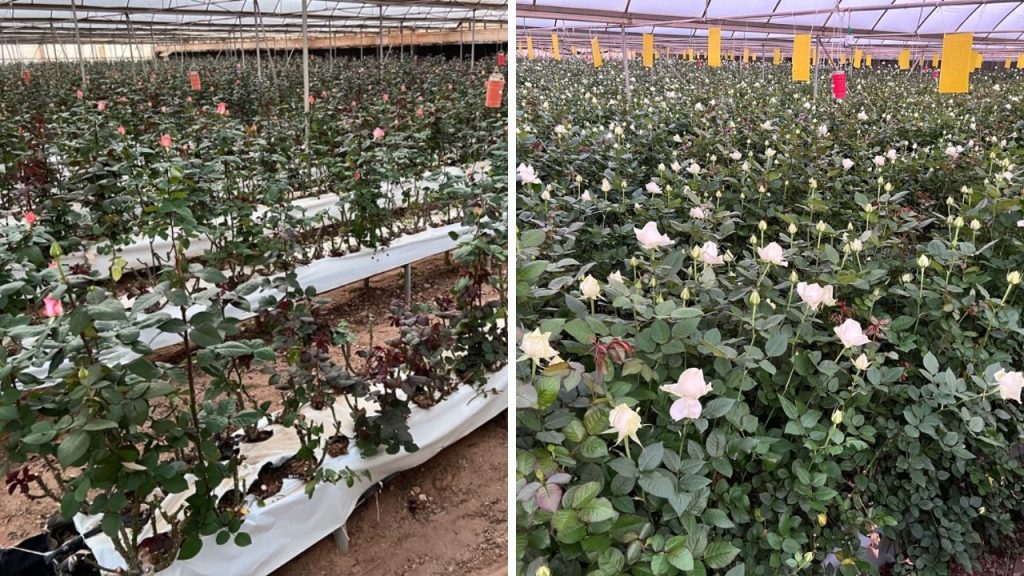

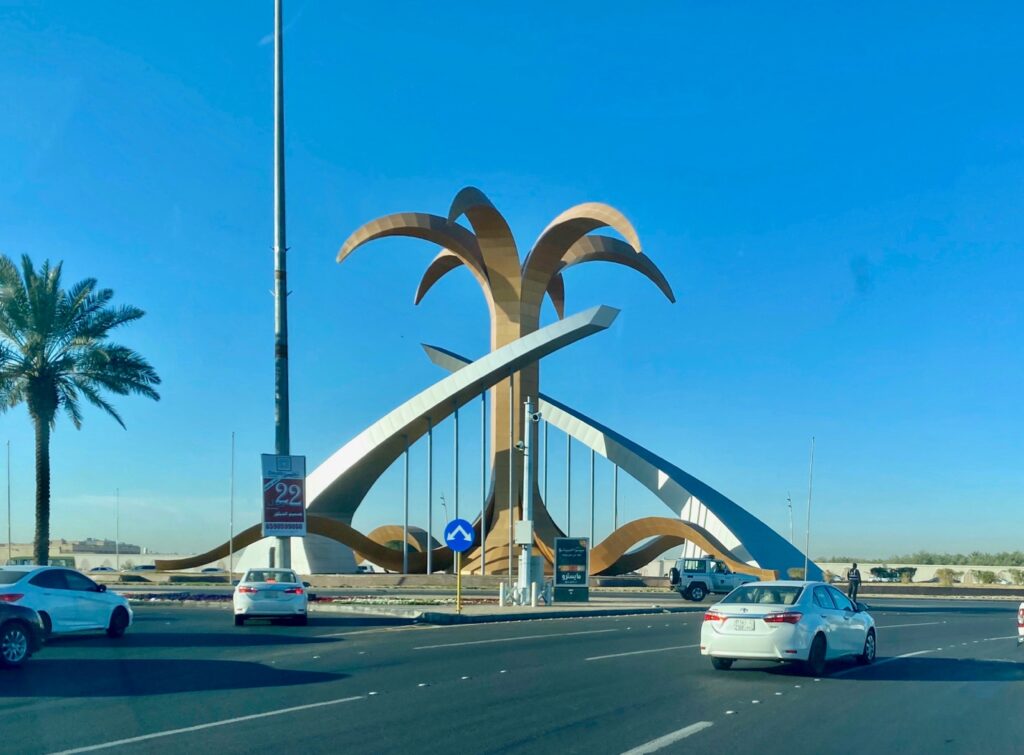
Tabuk is the gateway to North Arabia. This ancient region is rich with antiquities and archaeological sites with petroglyphs, forts, and palaces. The main station of the Hejaz Railway is located in Tabuk. Thamudic, Greek, and Nabataean inscriptions have been found all over the area.
There are spectacular fortresses all around Tabuk but this castle in the center of town might be the oldest. It is known to date from 1559, though some claim there was a fortress here as early as 3500 B.C. Inside its walls, two mosques are linked by courtyards, stairwells, and watchtowers. There is a small museum detailing the history of the castle and the wider city, from the great explorers who visited, like Ibn Battuta, to the caravans of pilgrims who would stop to drink from its wells on their way to Makkah and Medina.
The geological structure of Saudi Arabia consists of two major parts. The western section is mainly composed of ancient igneous and metamorphic rocks, and is called the Arabian Shield. Natural water resources in the Arabian Shield are limited and mainly depend on current rainfall and wadi flow (riverbeds.)
Conversely, the eastern sedimentary part contains prolific aquifers with large volumes of fossil groundwater.
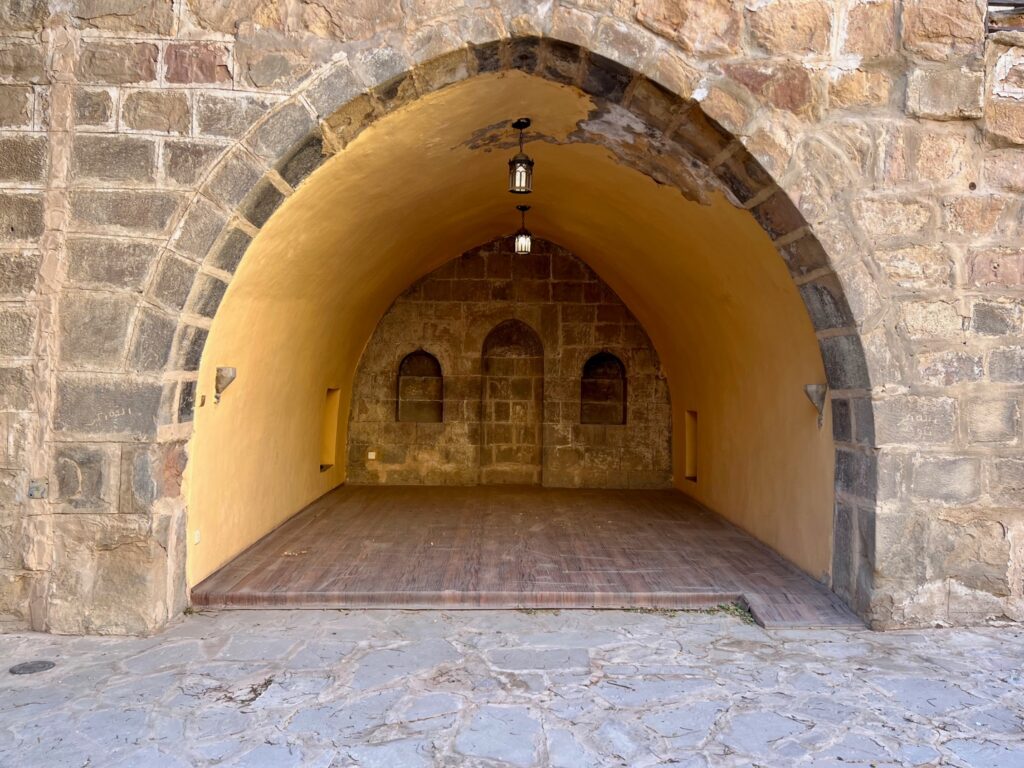

Most Islamic scholars hold the view that the Quran does not explicitly obligate women to cover their faces. In fact, the custom was practiced in many cultures before Islam, including for Bedouins as they roamed the desert. Covering was a way of protecting one’s skin and eyes. Now it is more cultural. It is not religious. I wanted to experience what it was like to wear a niqab—a garment, usually black, that covers the face. It was better than a COVID mask. I wanted to honor and respect my tour guide’s heritage. I wore it for a couple of hours.

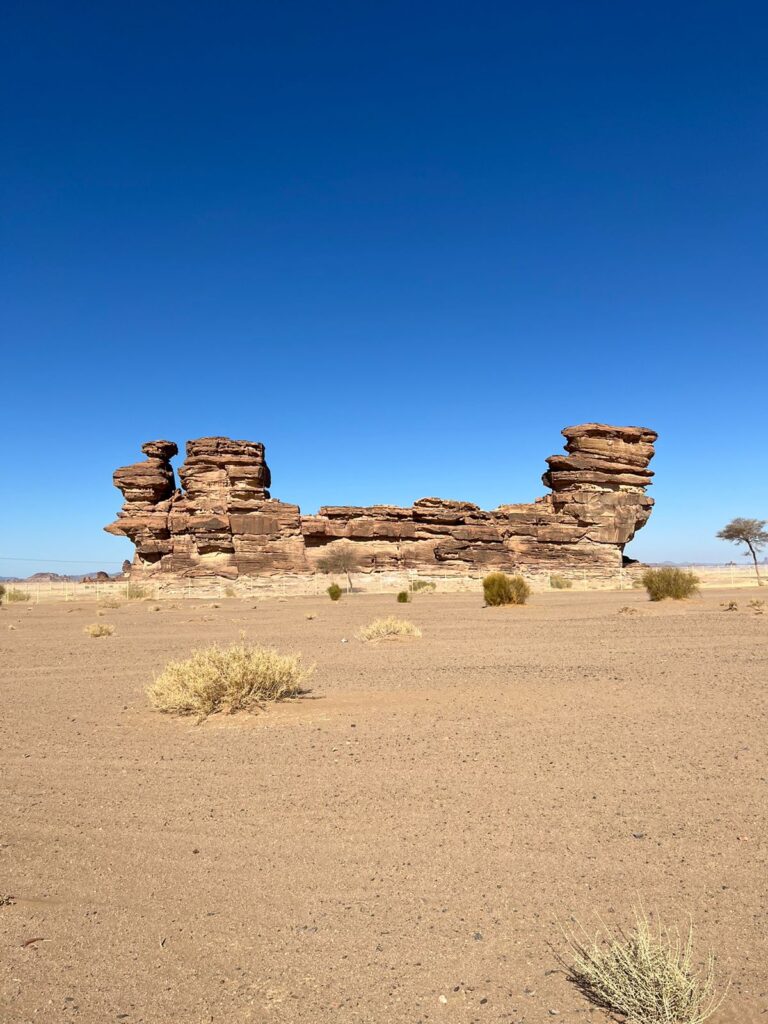

NEOM is a Saudi Arabian city being built in Tabuk Province. NEOM can be imagined as a place where entrepreneurship and innovation will frame the course for a new future. The city is being marketed as a unique model for sustainable living, working, and prospering. Saudi officials describe it as “the world’s most ambitious project.”
[su_lightbox type=”image” src=”https://ncusar.org/blog/wp-content/uploads/2023/02/neom-overlay-2000×1076-2.jpg”]
I had the privilege of driving south to north and west to east during the construction of this project.
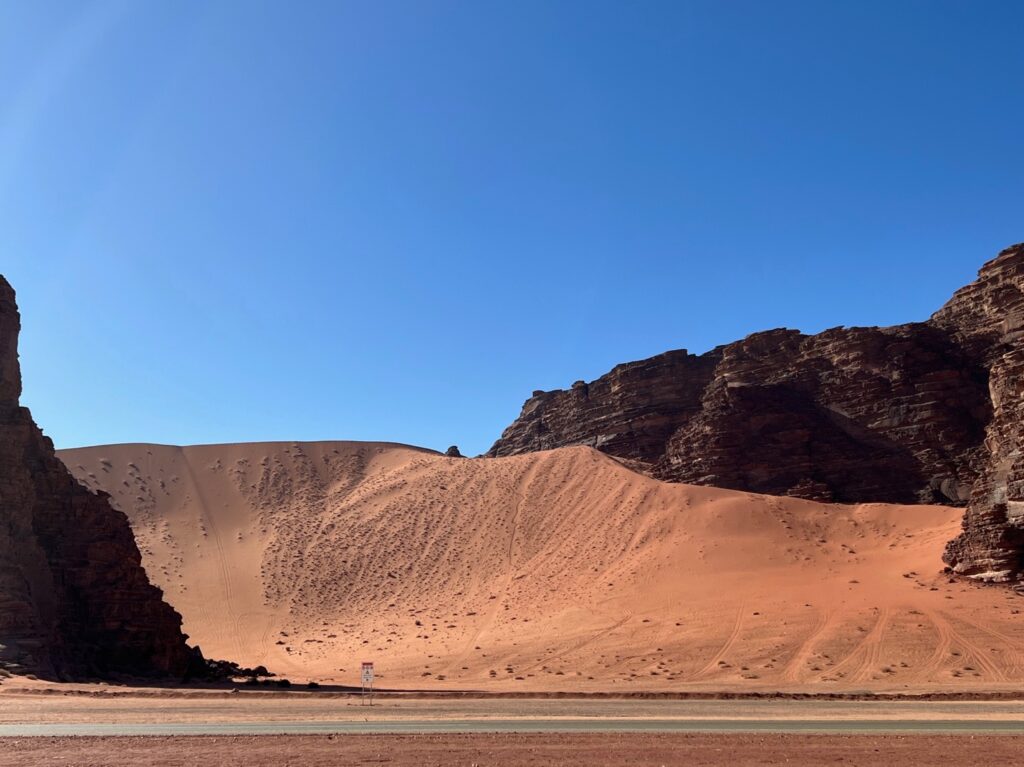
Driving through the desert, we came upon another historical site—Maghaer Shuaib.
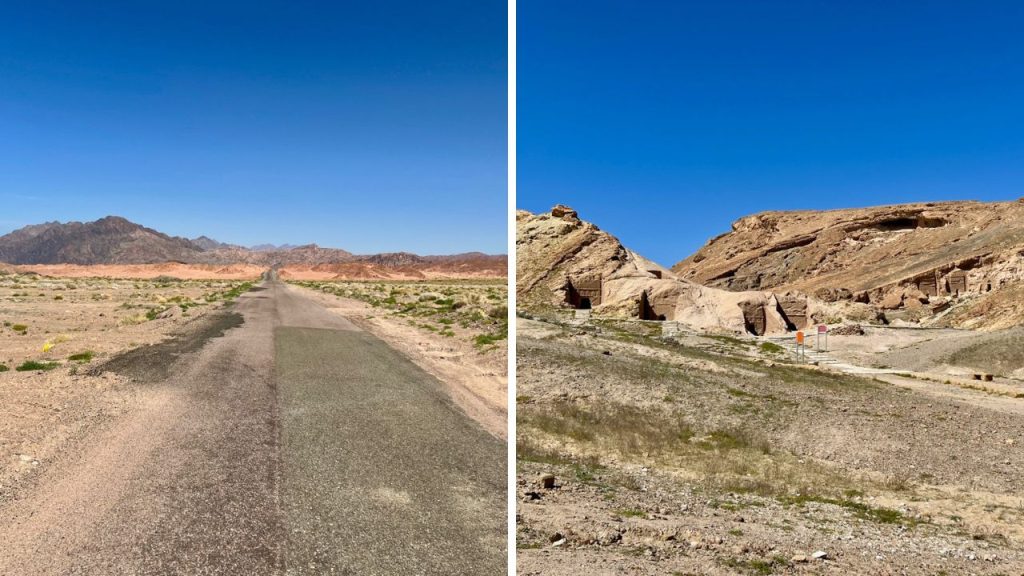

The Maghaer Shuaib is nestled among the rocks in the reddish desert west of Tabuk. The Romans left their impact on the facades.
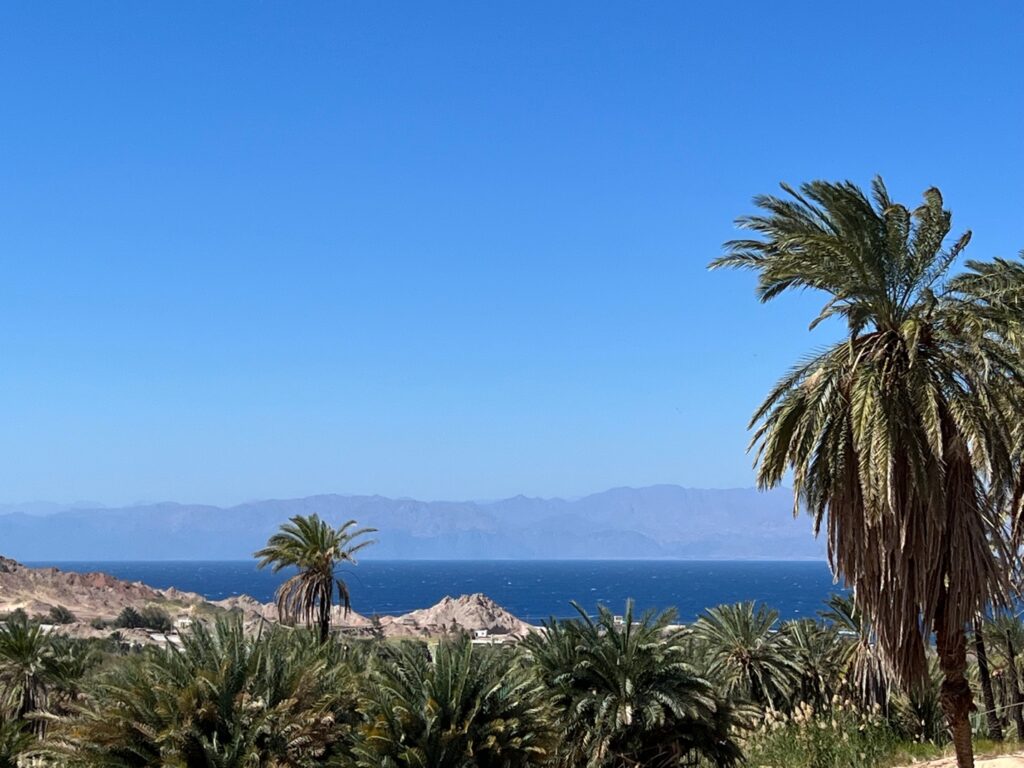
When Moses brought his people out of Egypt through the Red Sea, they are supposed to have reached the land of Madyan. It bears witness to him, as it is called the “Valley of Moses.”
In the valley of Maqna, a few miles before the coast, palm trees collect around small springs, which include the “Springs of Moses.” These springs pump water through holes in the ground such that it appears the water arises from the middle of the sand. They are a popular site for national and international tourists.

Driving towards Tayeb Al-Ism.
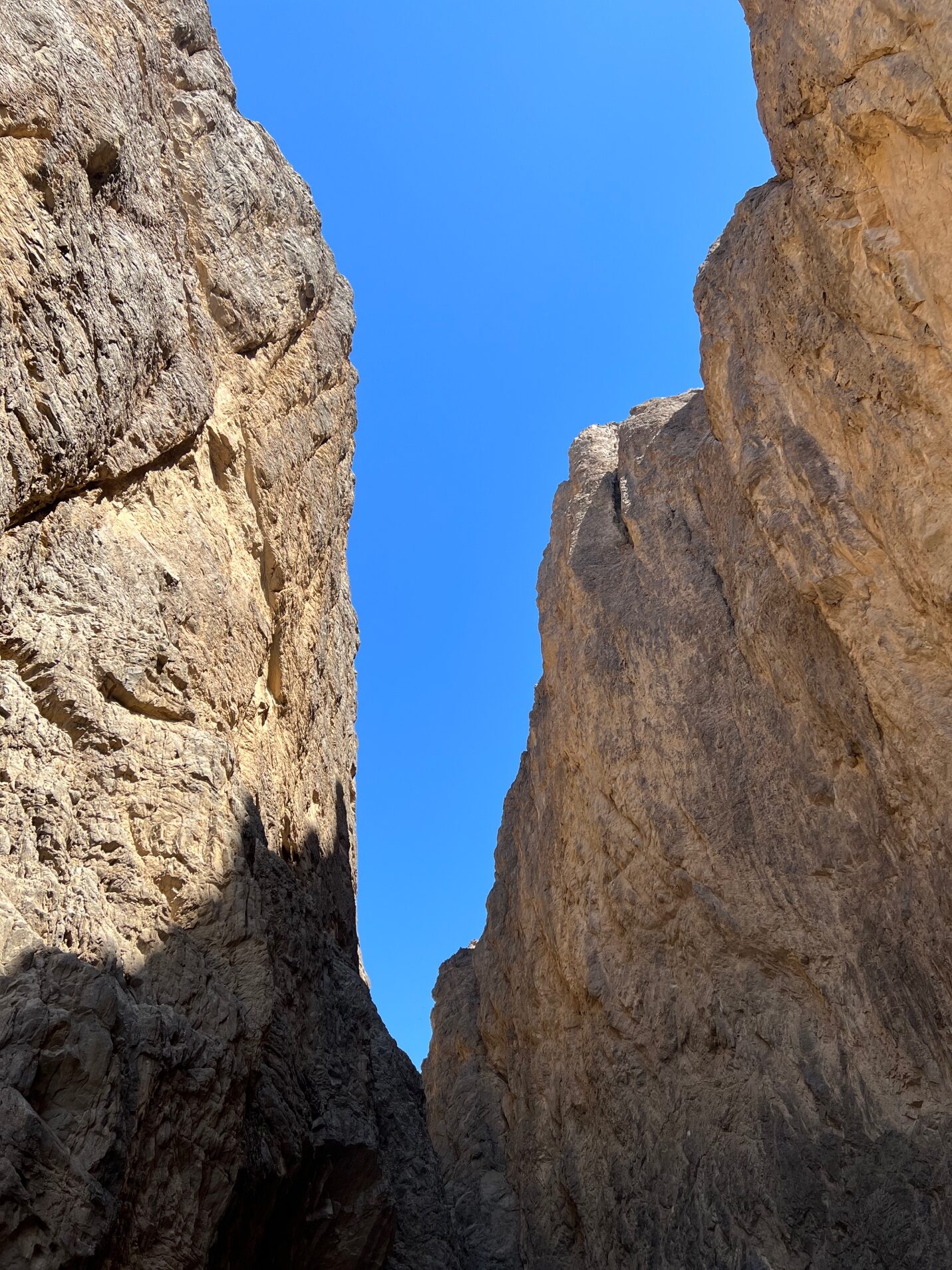
Here (video above), we have driven up the wadi, turned around, and have now begun our return. We are headed for the Gulf of Aqaba. The imposing shape of the 2,300 feet (600 meter) high granite massif of the Tayeb Al-Ism opens up to the palm dates and out to the turquoise waters and white beaches of the Gulf of Aqaba.
NEOM & THE LINE
NEOM is a portmanteau of the Greek word neos, meaning “new,” and mustaqbal, the Arabic word for “future.” It is envisioned as a futuristic mega-city 33 times the size of New York City.
Within NEOM is the site chosen for The Line—The Linear City. The Line is a revolutionary experiment in urban development that could redefine how cities of the future might look. It aims to create an unprecedented urban living experience while preserving the incredible surrounding nature.
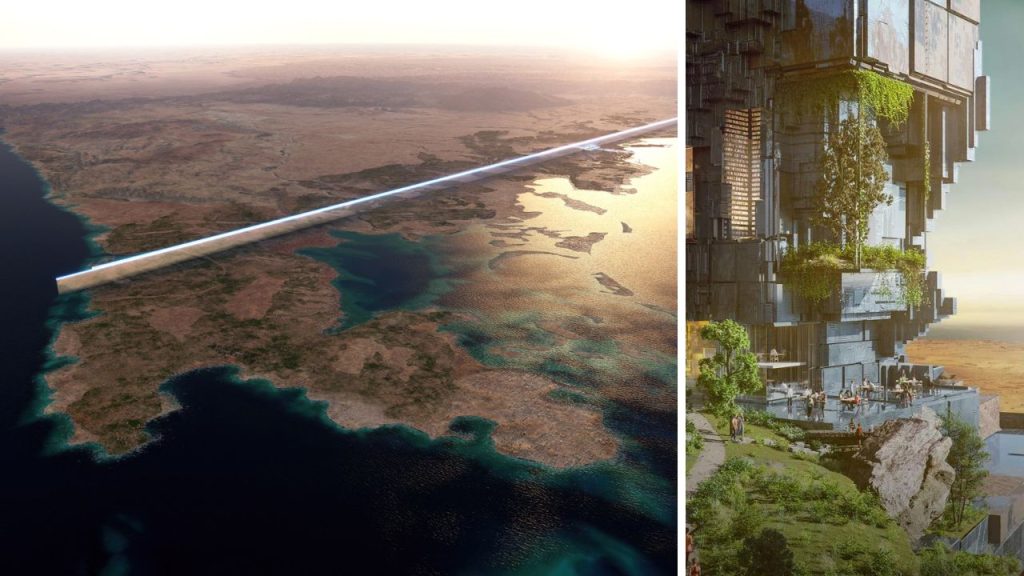
As with the creation of Central Park in the 1850s in New York City, NEOM has had to resettle people and towns to make way for its construction. The Saudi Arabian government has built, and will build more, modern homes, schools, health centers, and other facilities for the Bedouin of NEOM to provide security to them and the region.
The first phase of the project is due to finish by 2030. Saudi Arabia Crown Prince Mohammed Bin Salman Al Saud has announced that “[w]e’ve already started construction and by 2030 NEOM will host 1.5 million residents and 9 million residents by 2045.”
He added, “NEOM will be a place for all people from across the globe to make their mark on the world in creative and innovative ways. NEOM remains one of the most important projects of Saudi Vision 2030, and our commitment to delivering The Line on behalf of the nation remains resolute.”
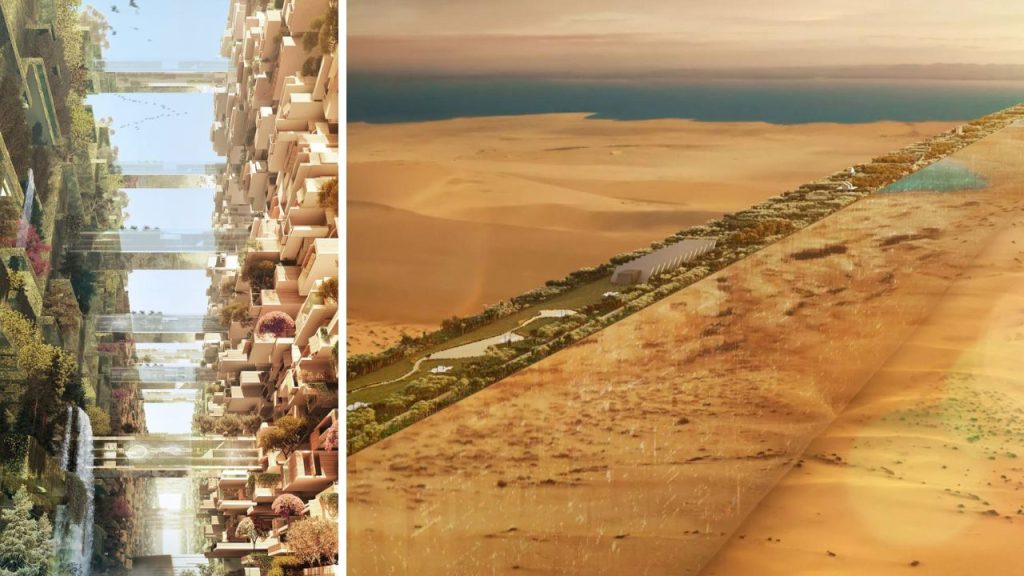
The Line plans to be a zero-carbon city and a model for a future way of living. It is touted to be the “world’s first zero-gravity vertical city” and its plans call for it to span 105 miles and have “zero cars, zero pollution, and zero carbon emissions.”
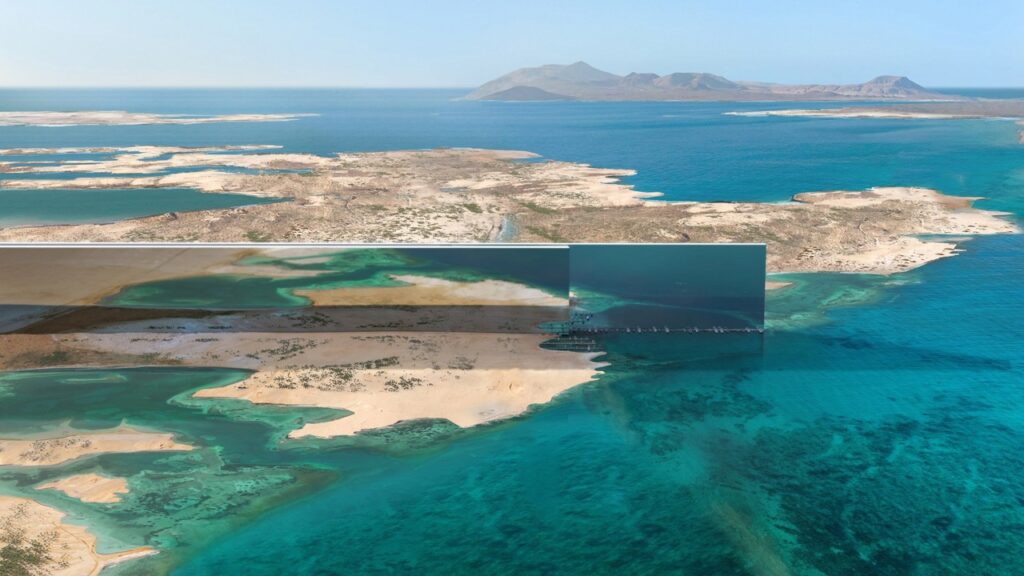
The Crown Prince observed, “[w]e want to raise the capacity of Saudi Arabia, get more citizens and more people in Saudi Arabia. And since we are doing it from nothing, why should we copy normal cities?”
The plan is bold and forward thinking. Looking at images of its conceptualization, it becomes clear there is nothing like it anywhere in the world.

Photographs by Paige Peterson. Photographs in AlUla by Abdulmajeed Albalawi.
